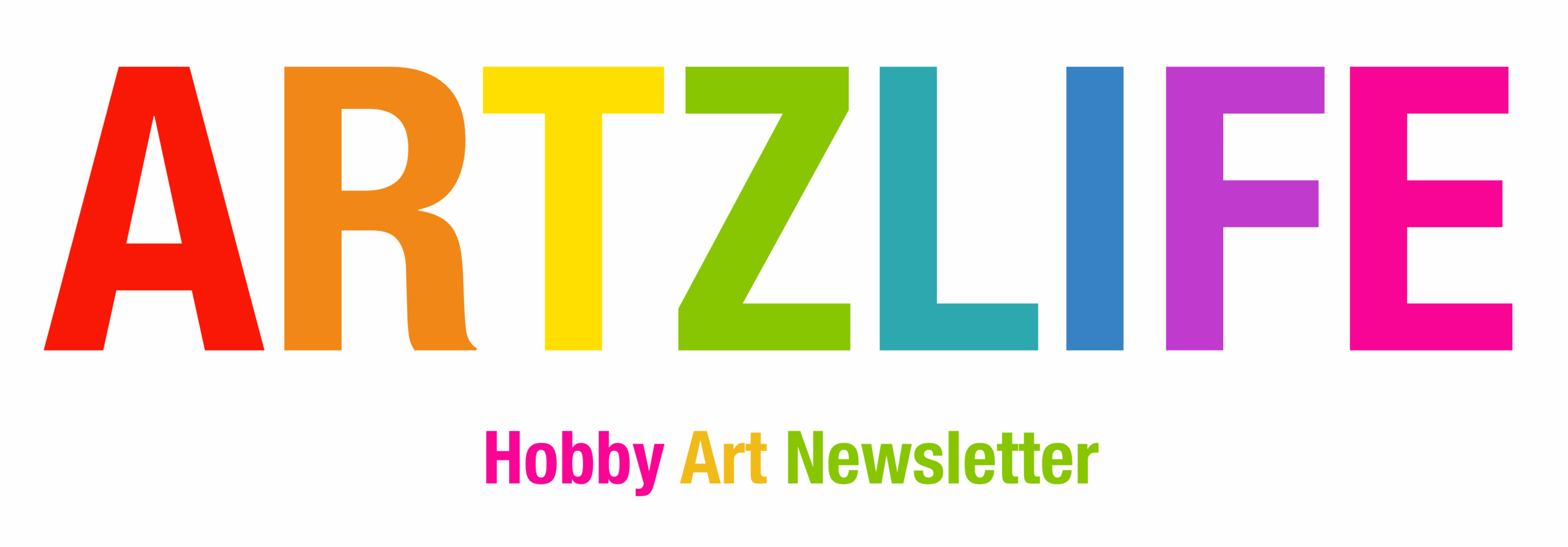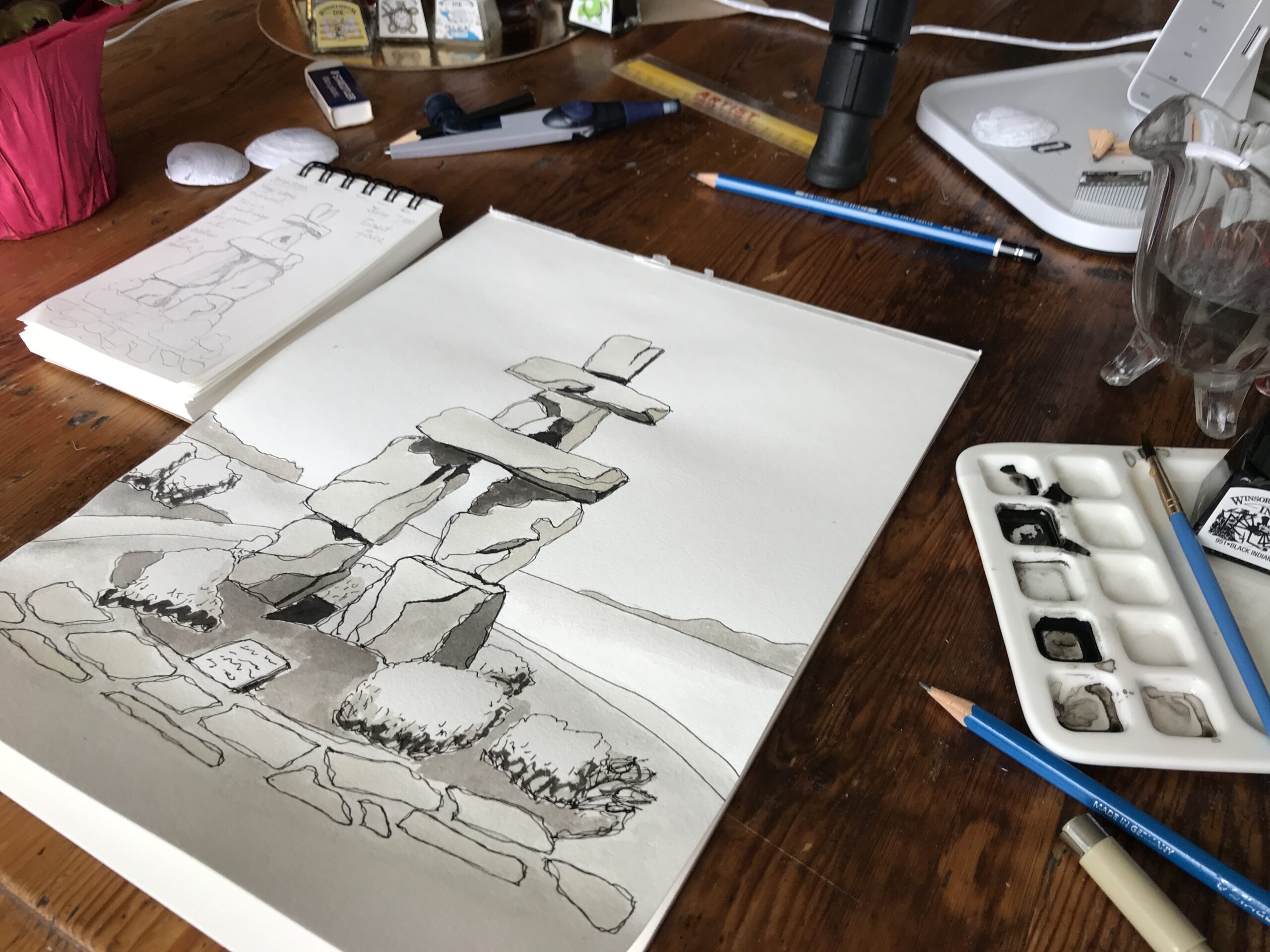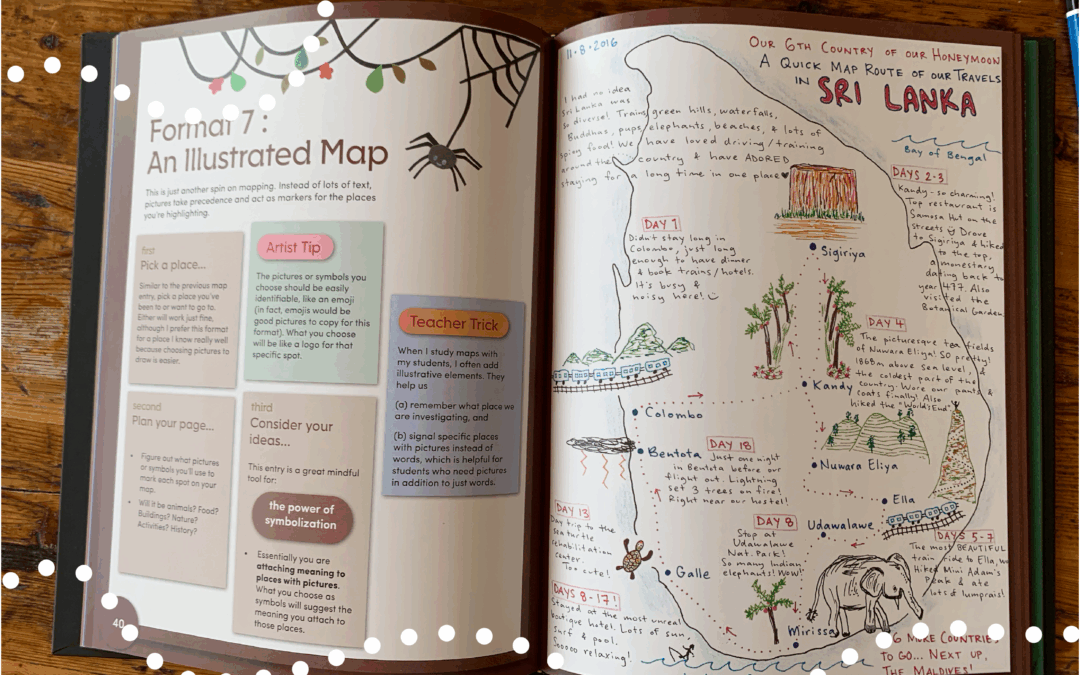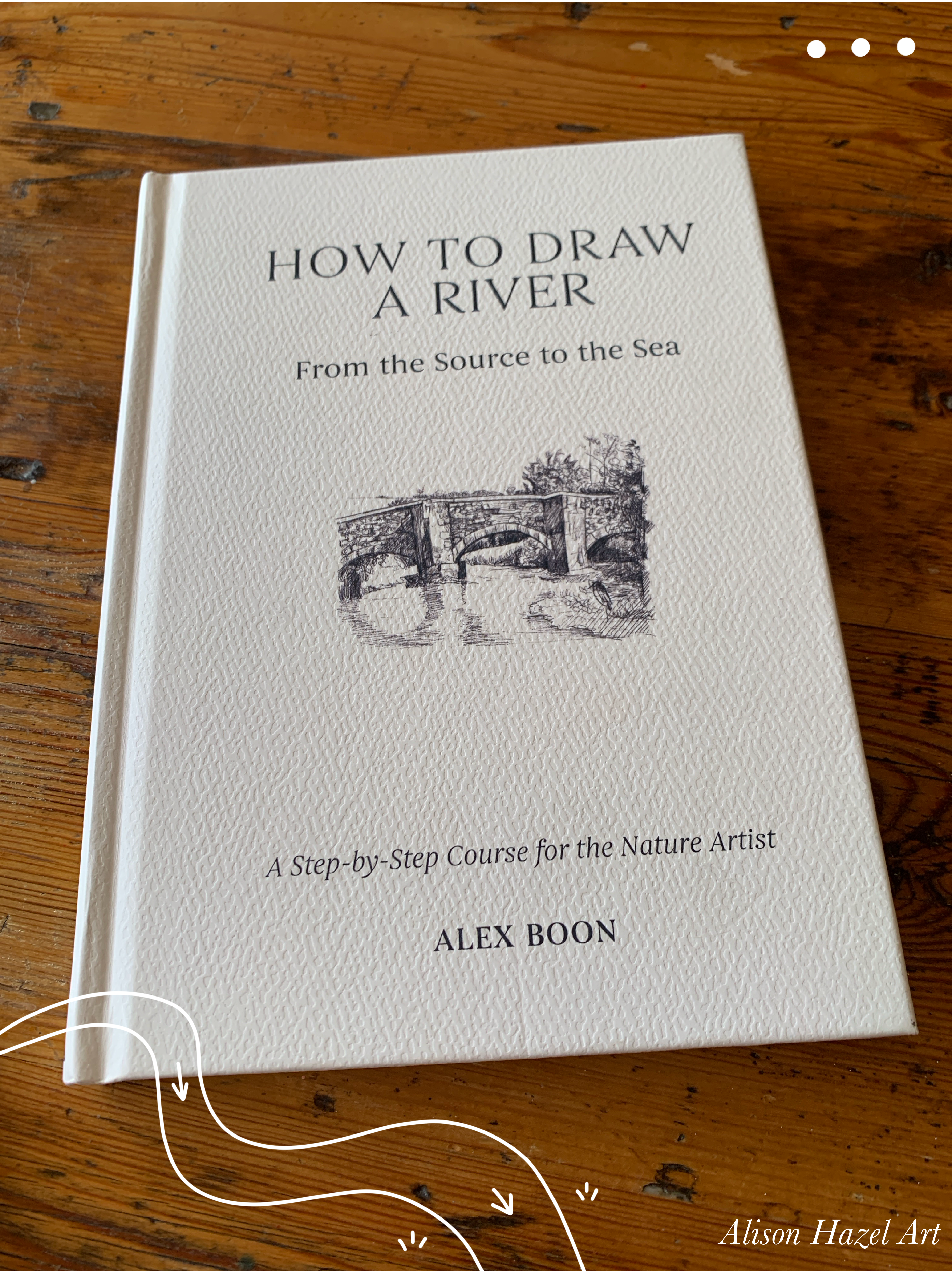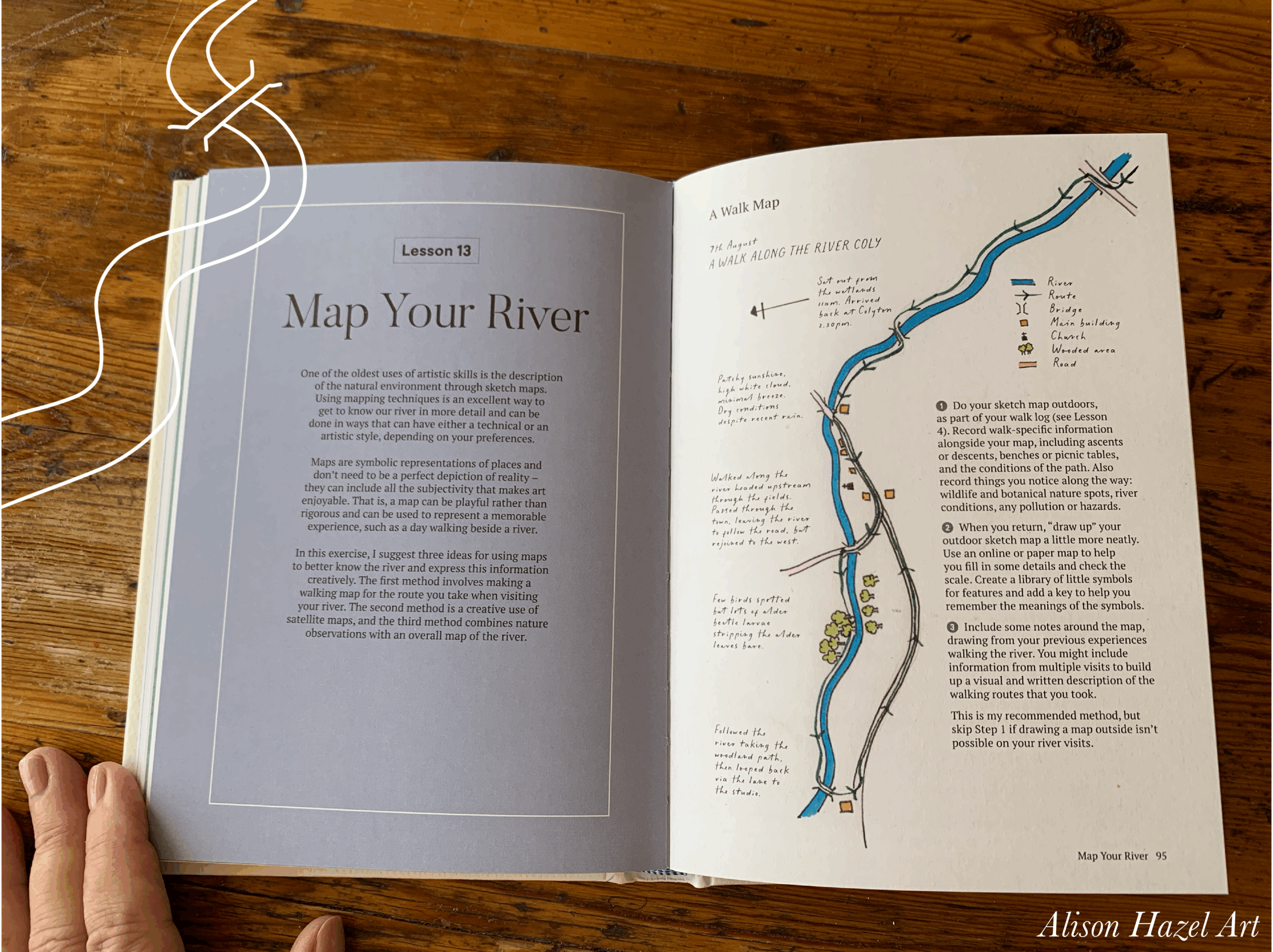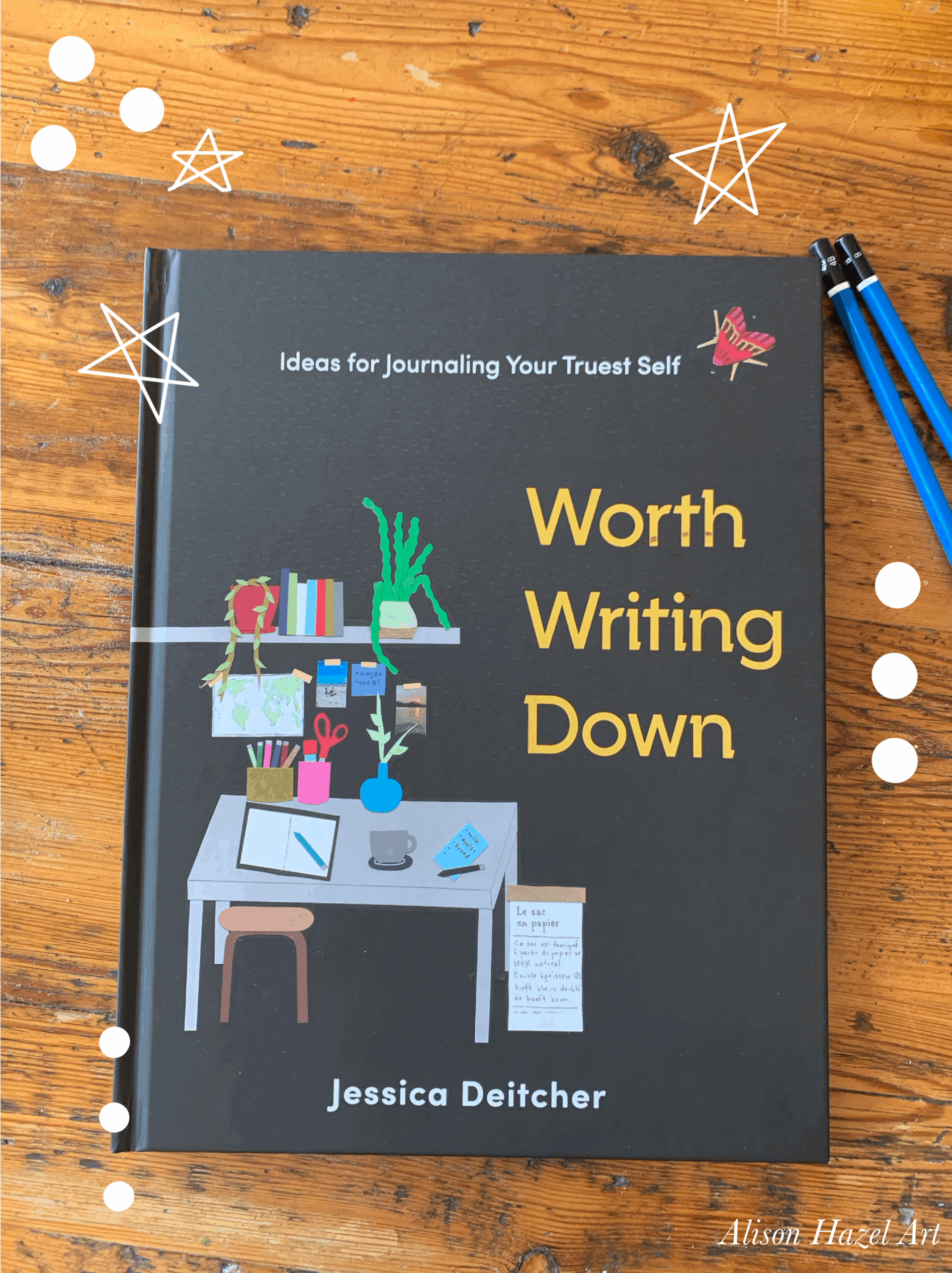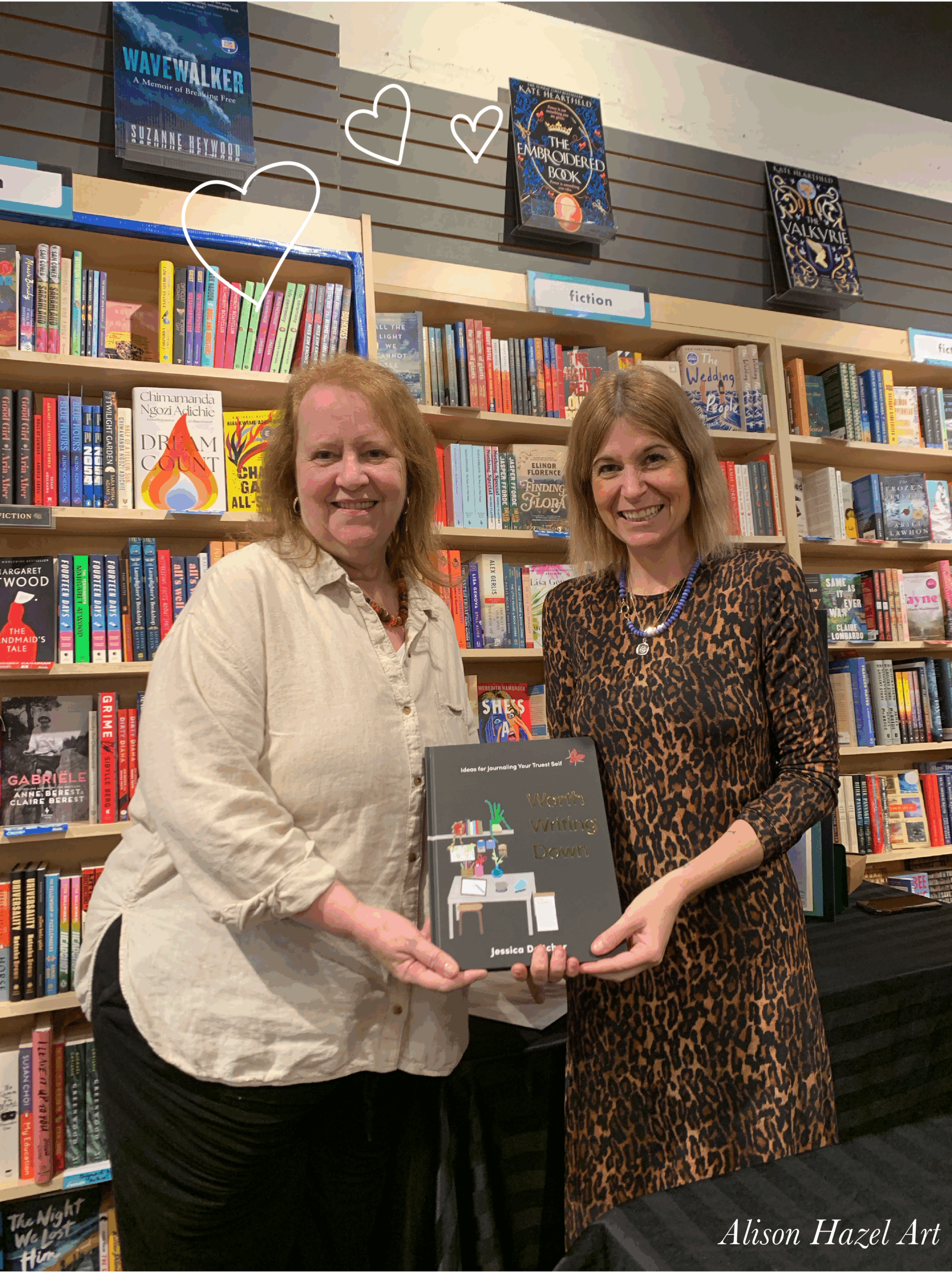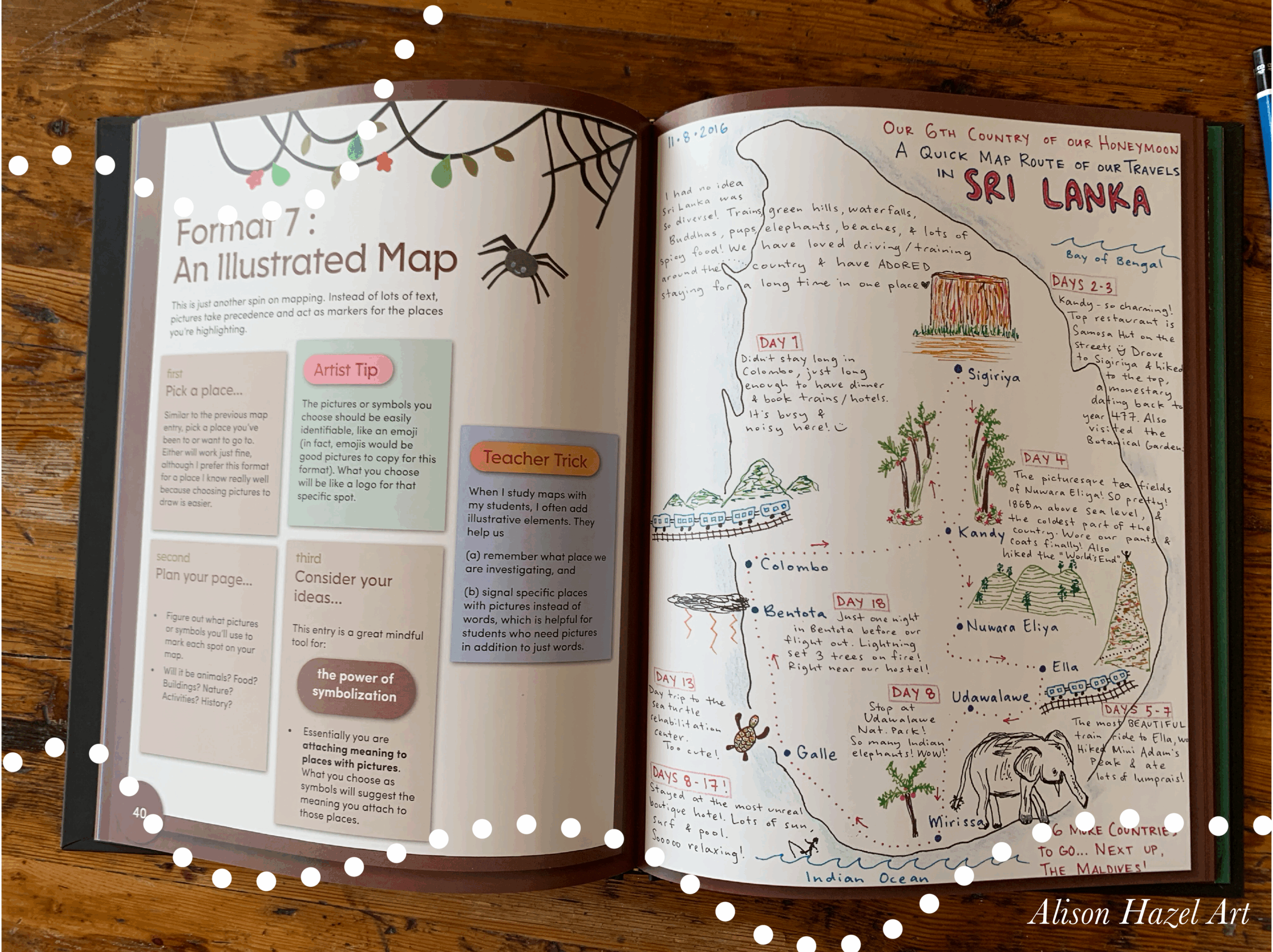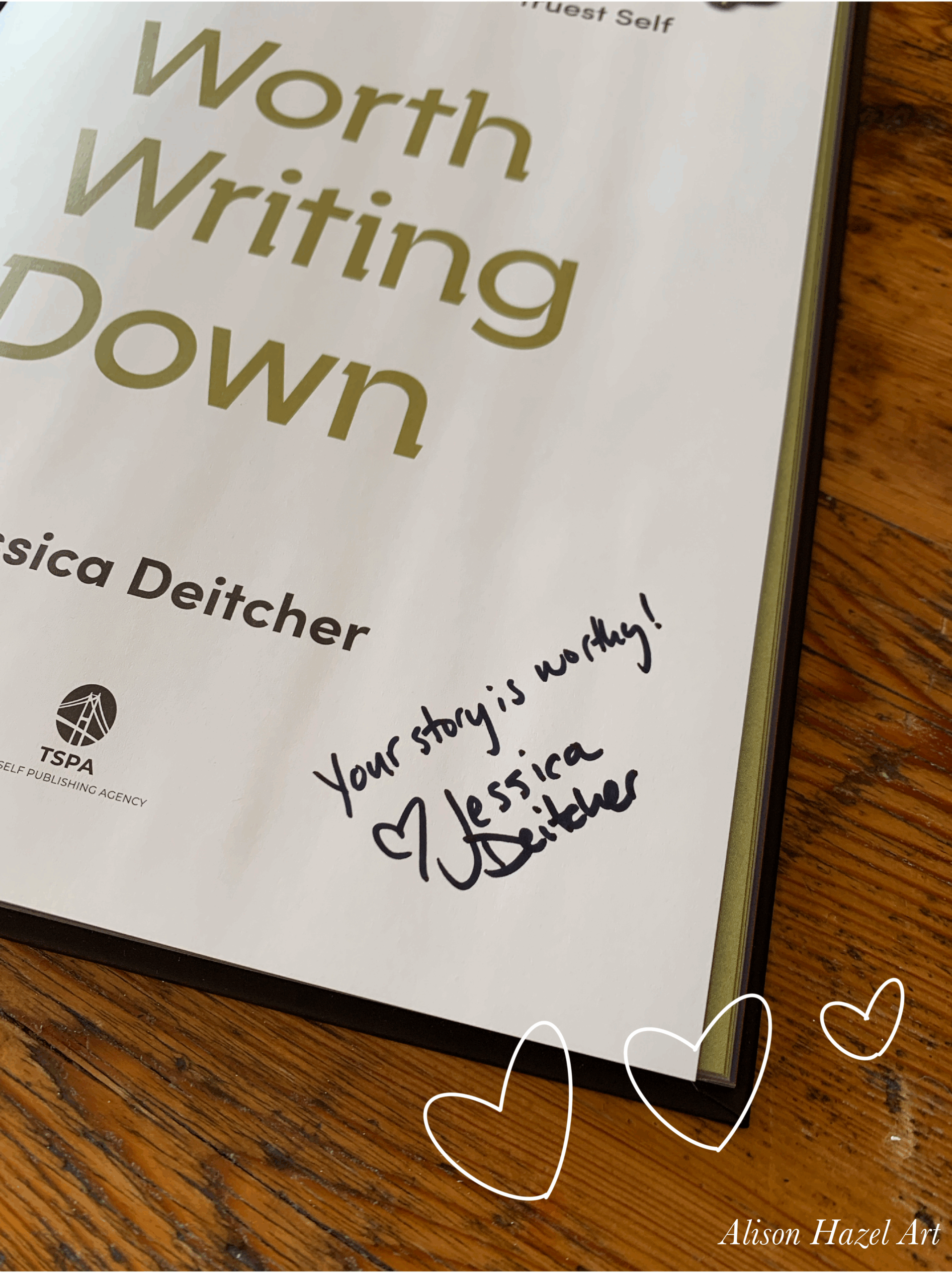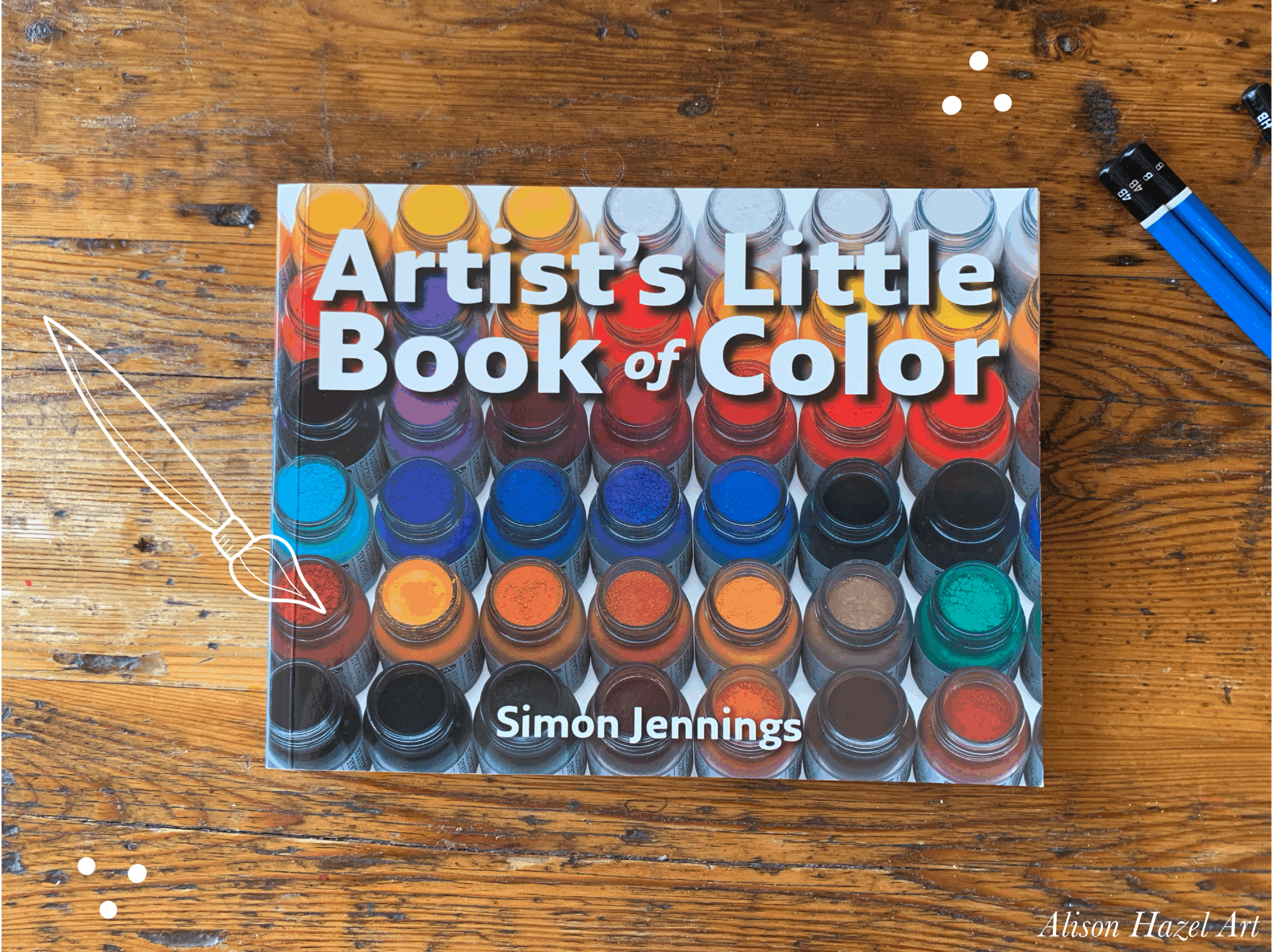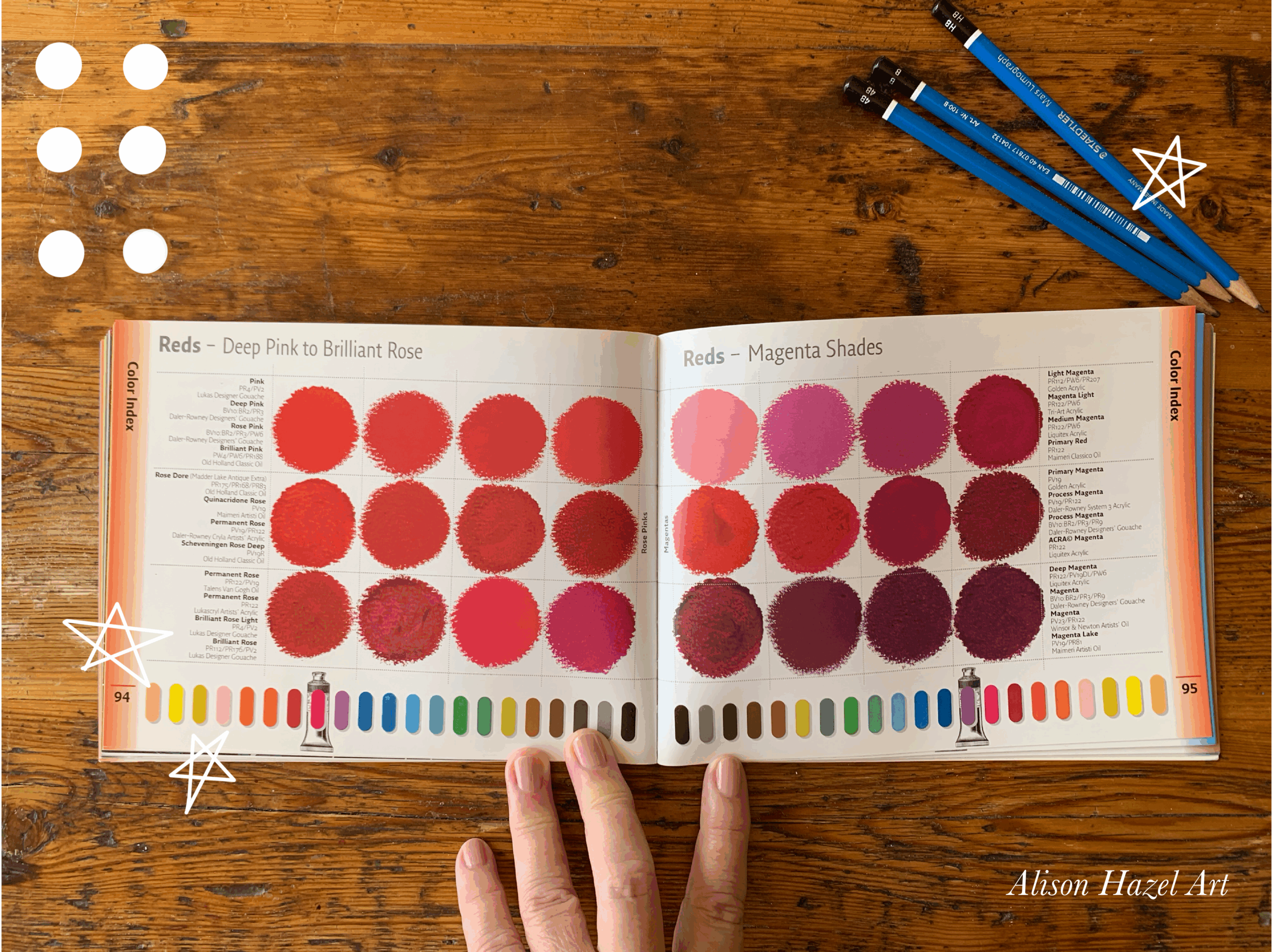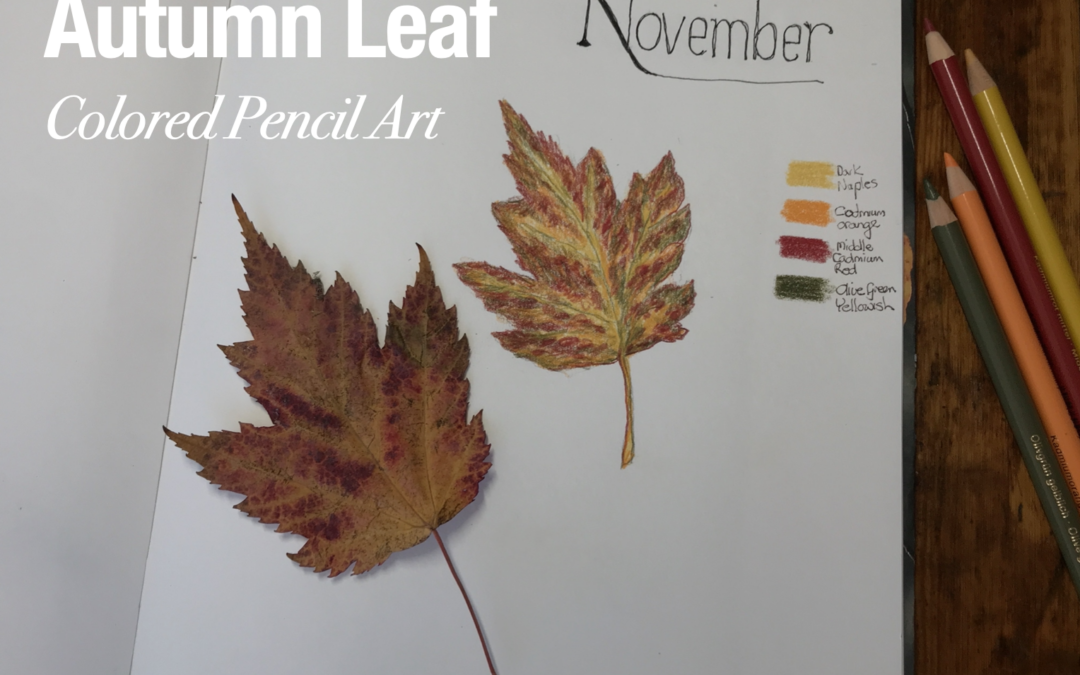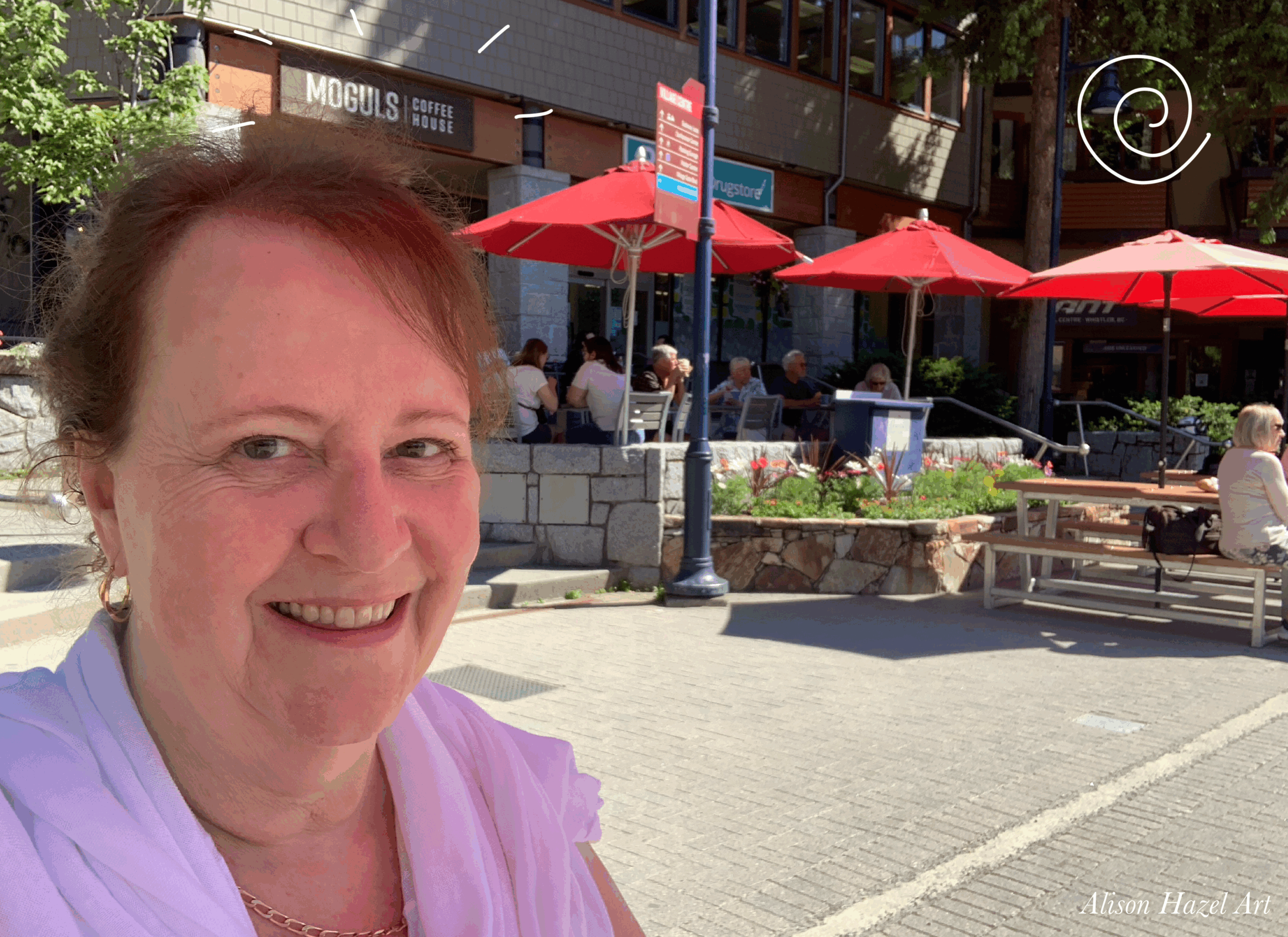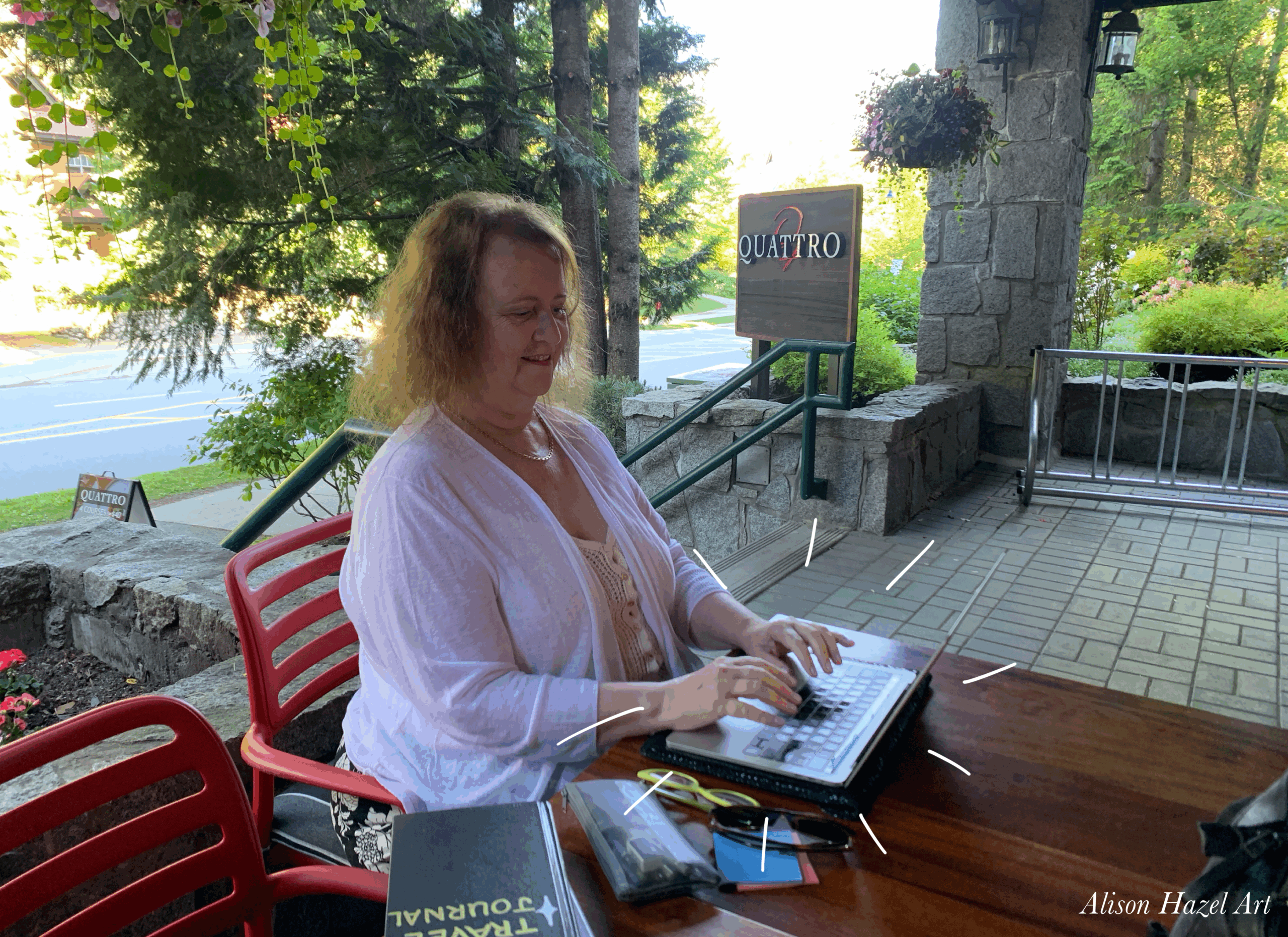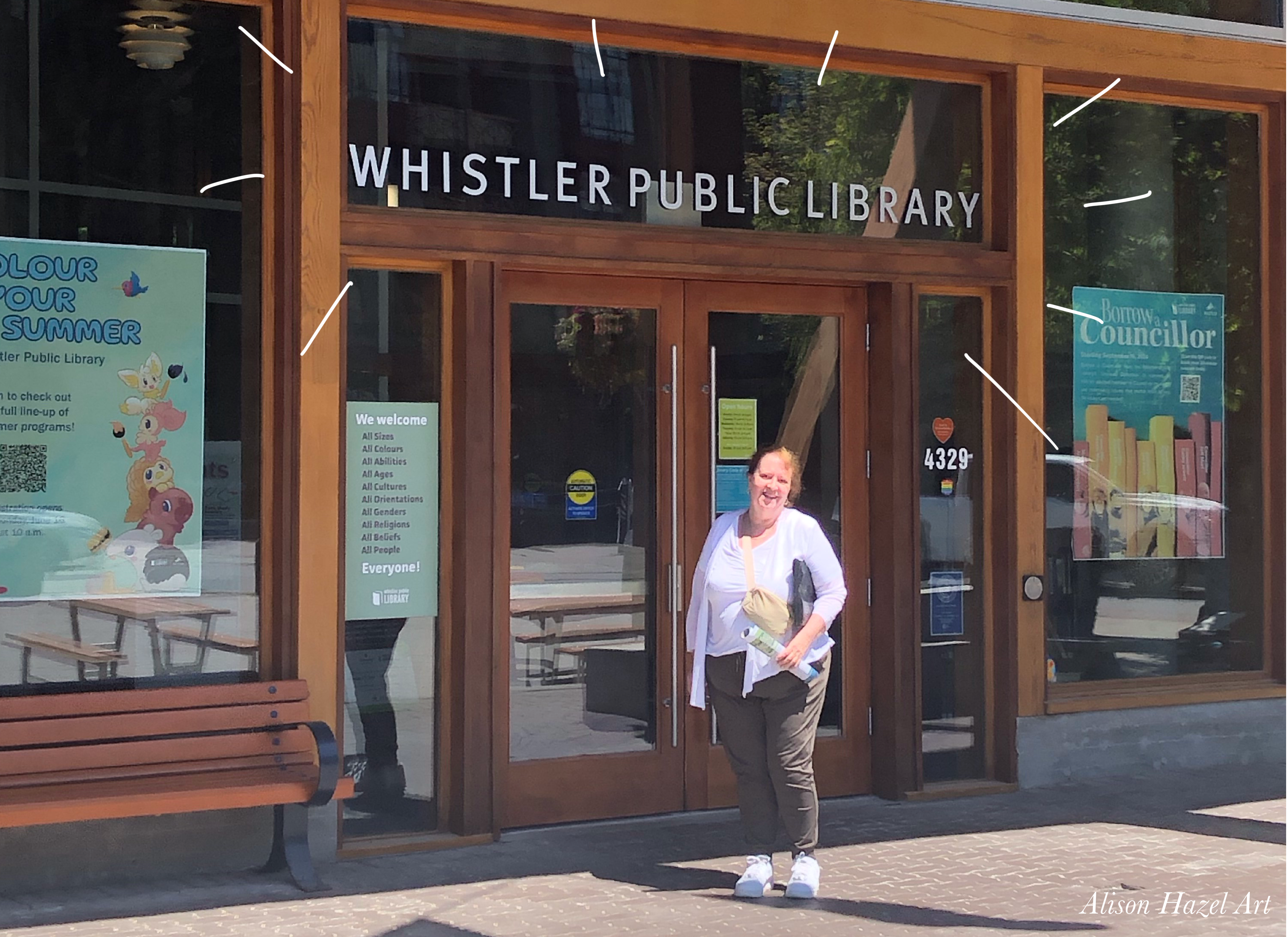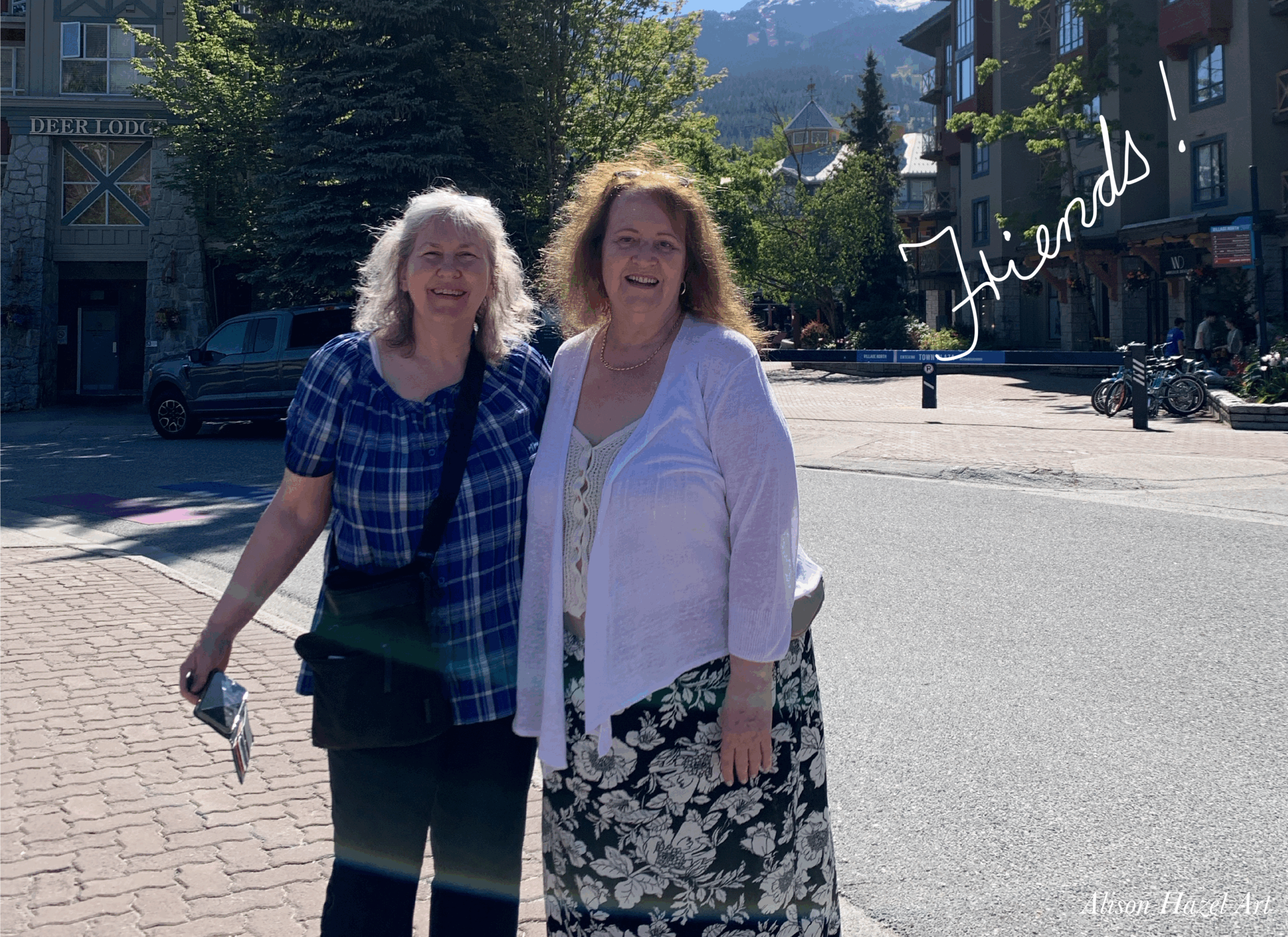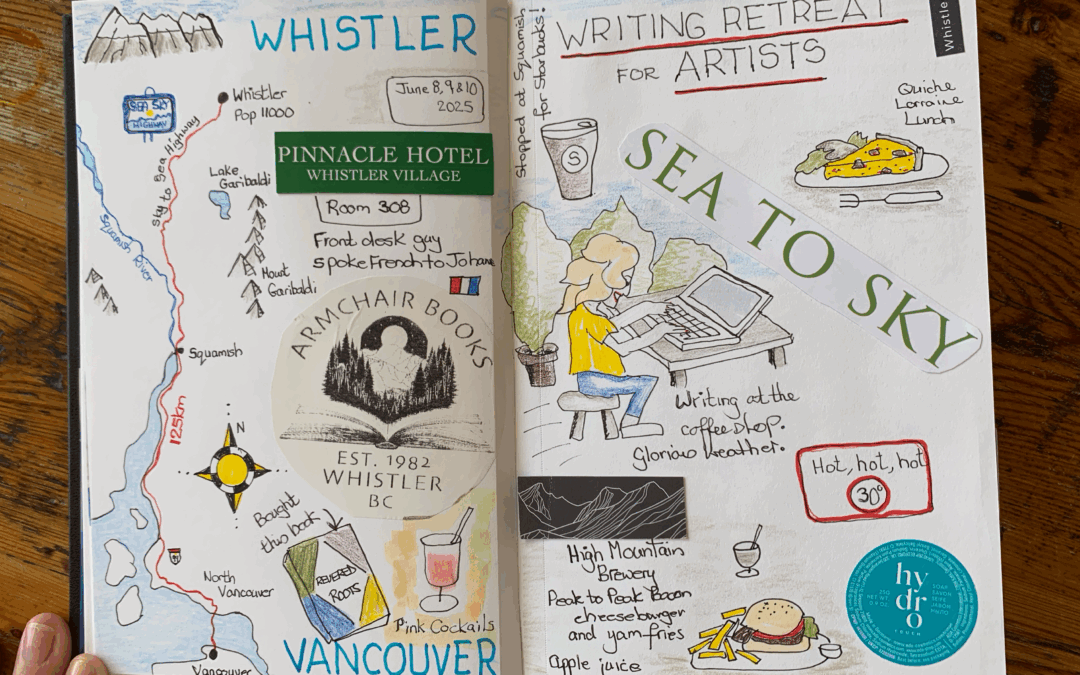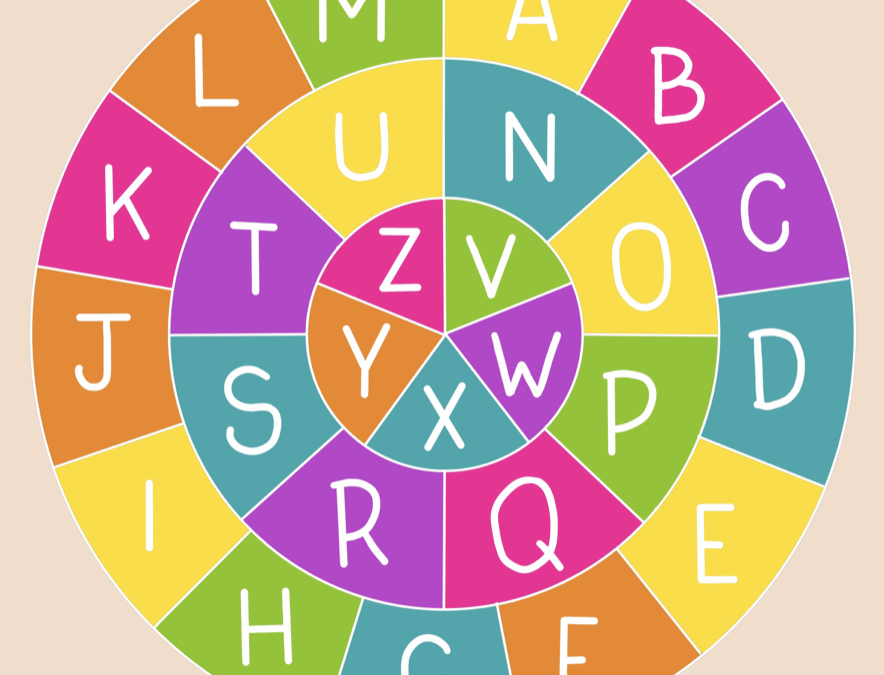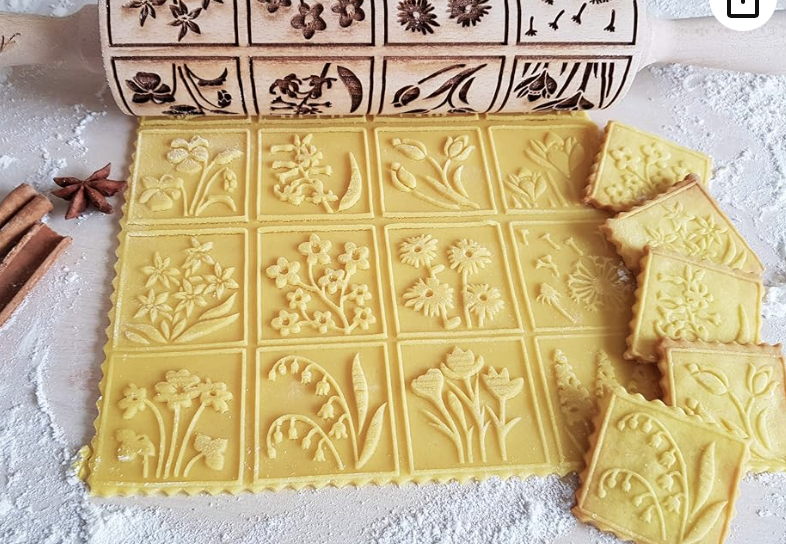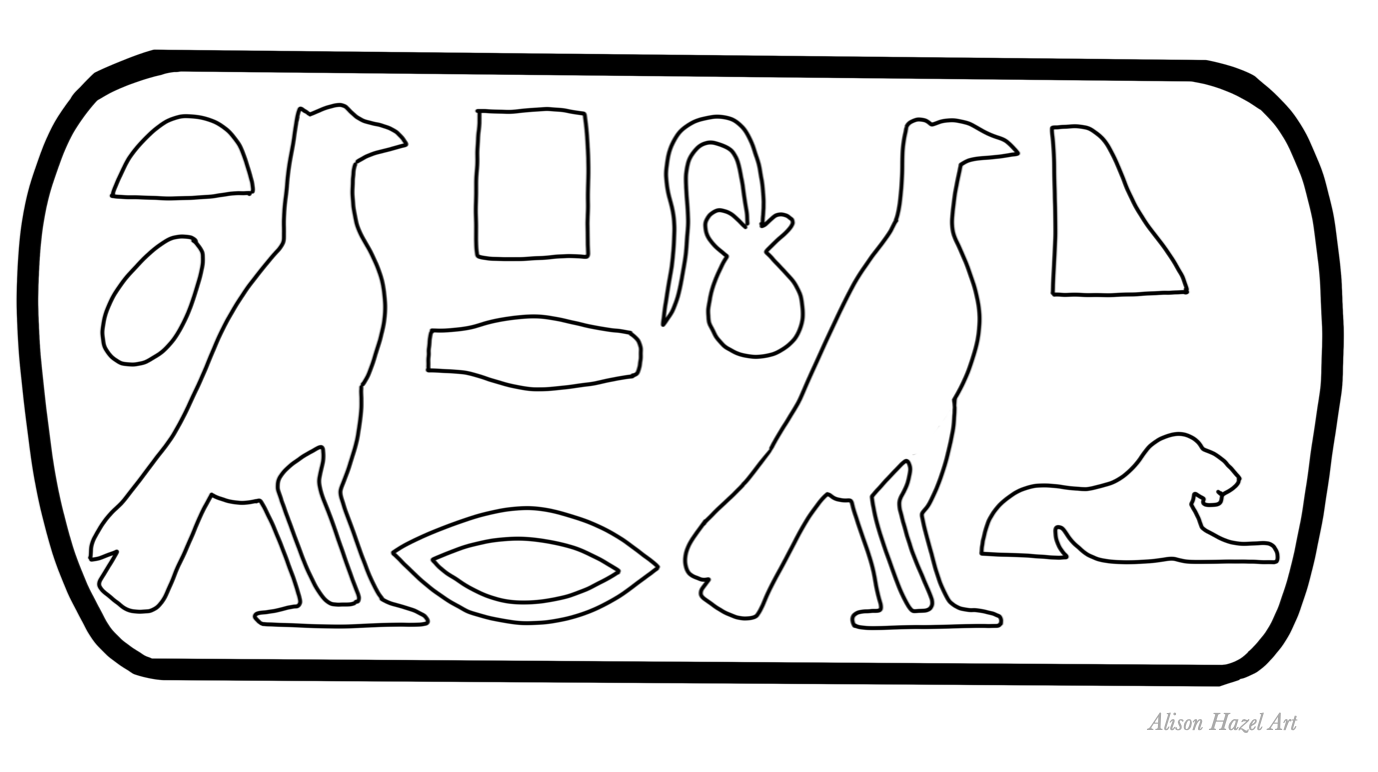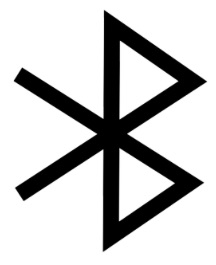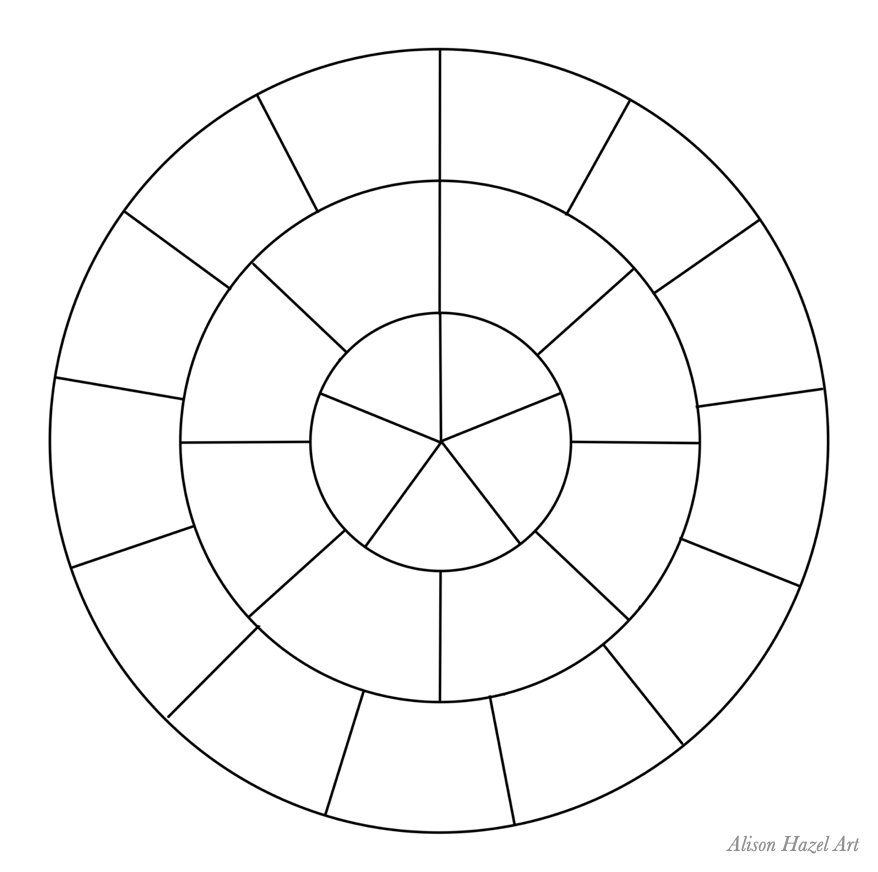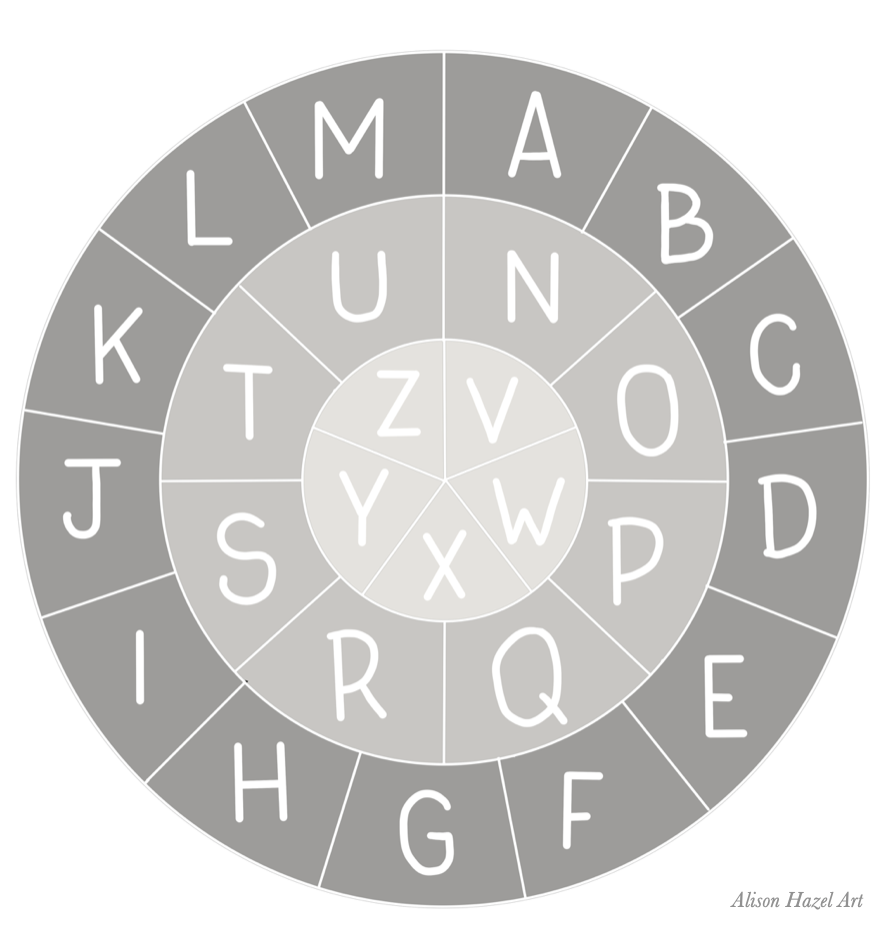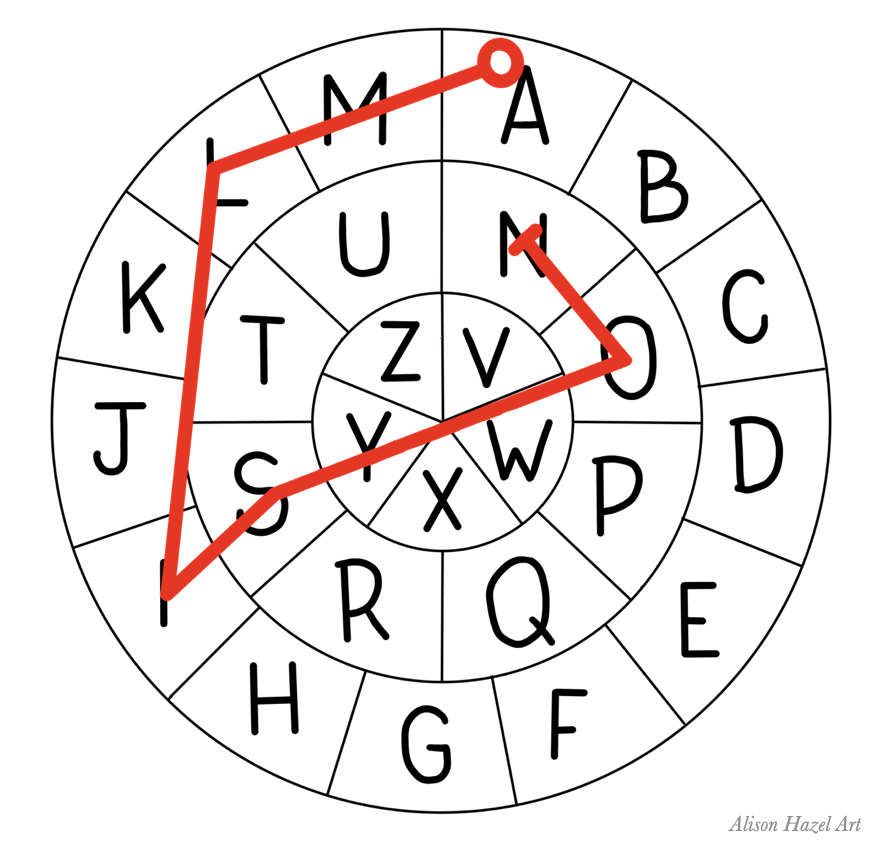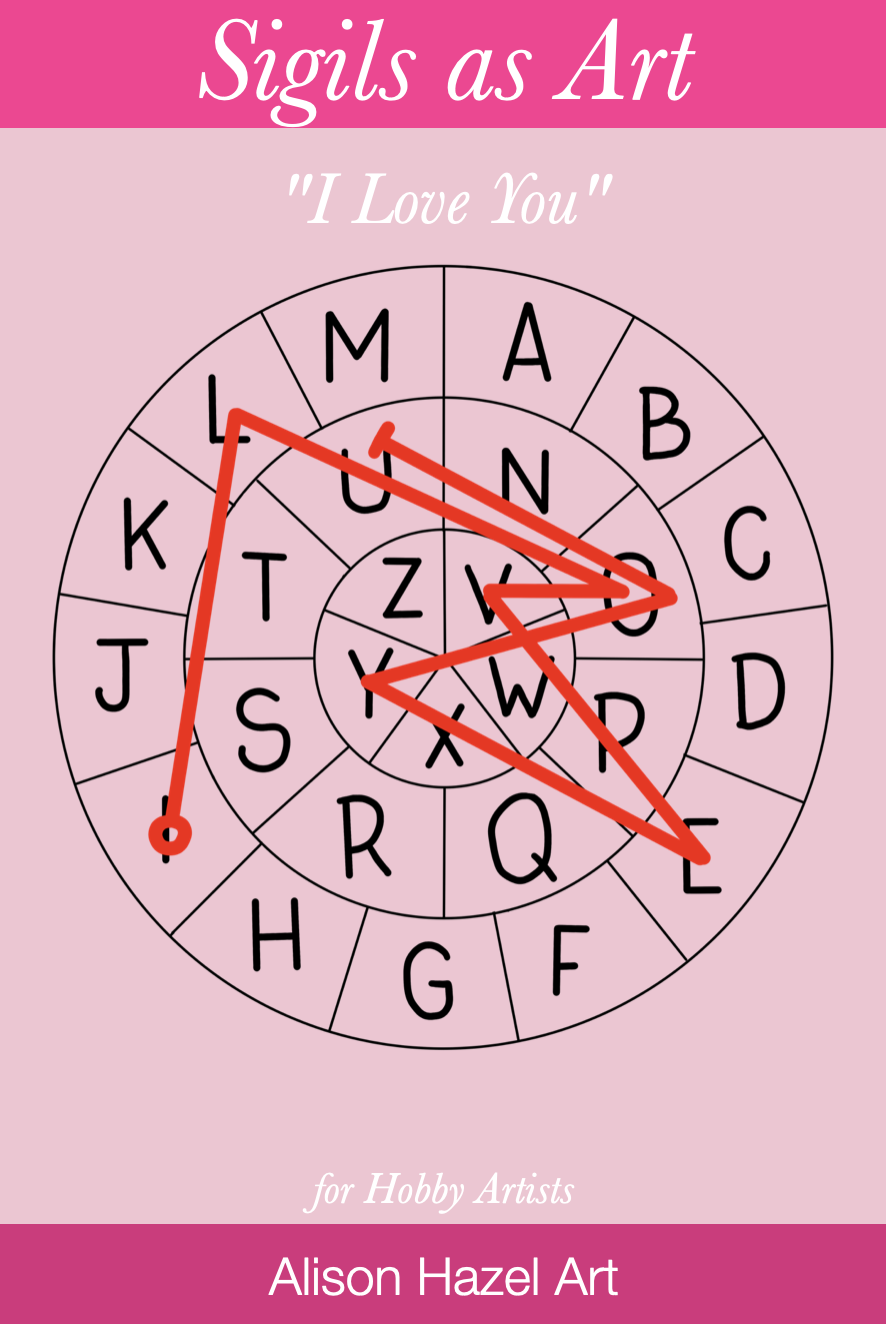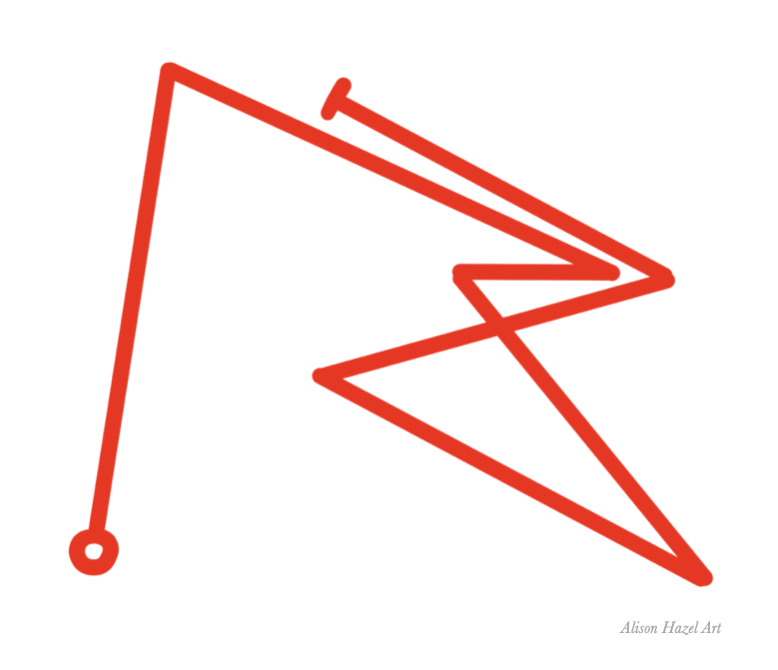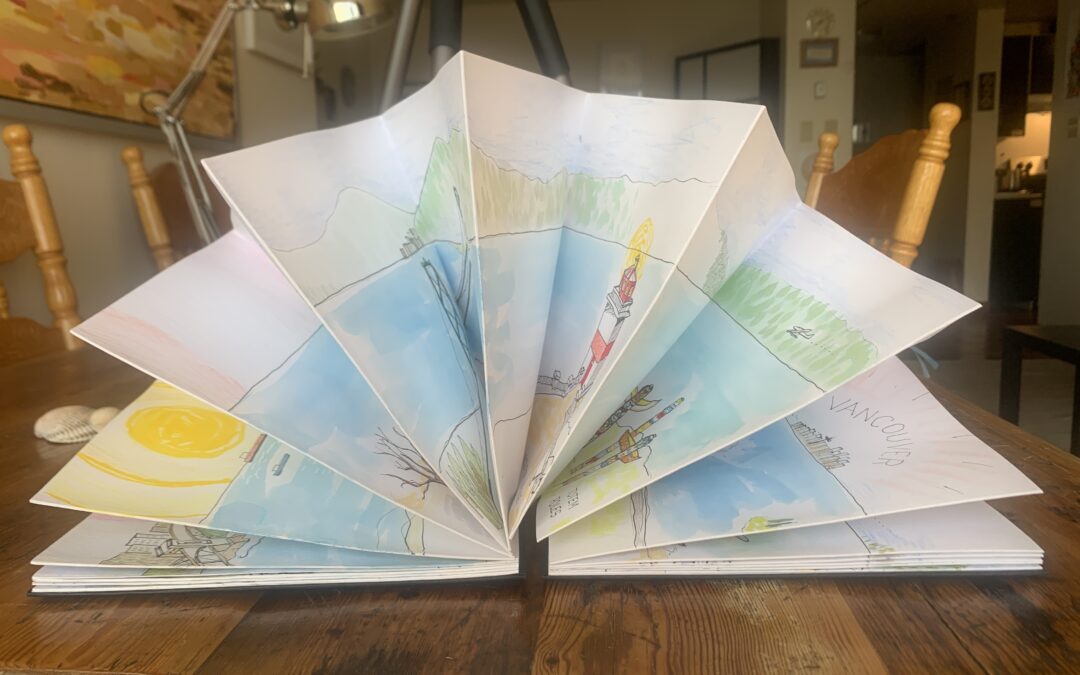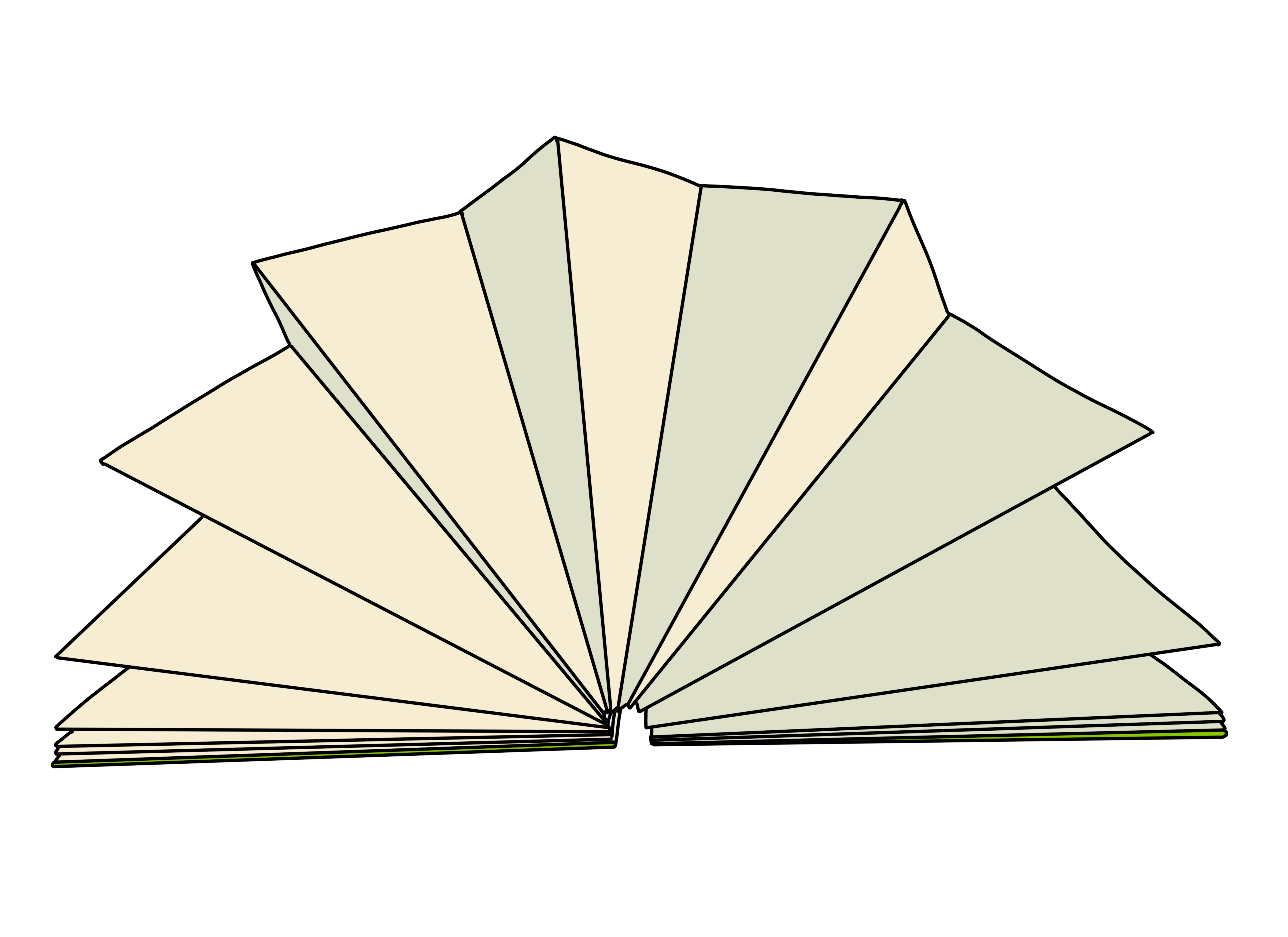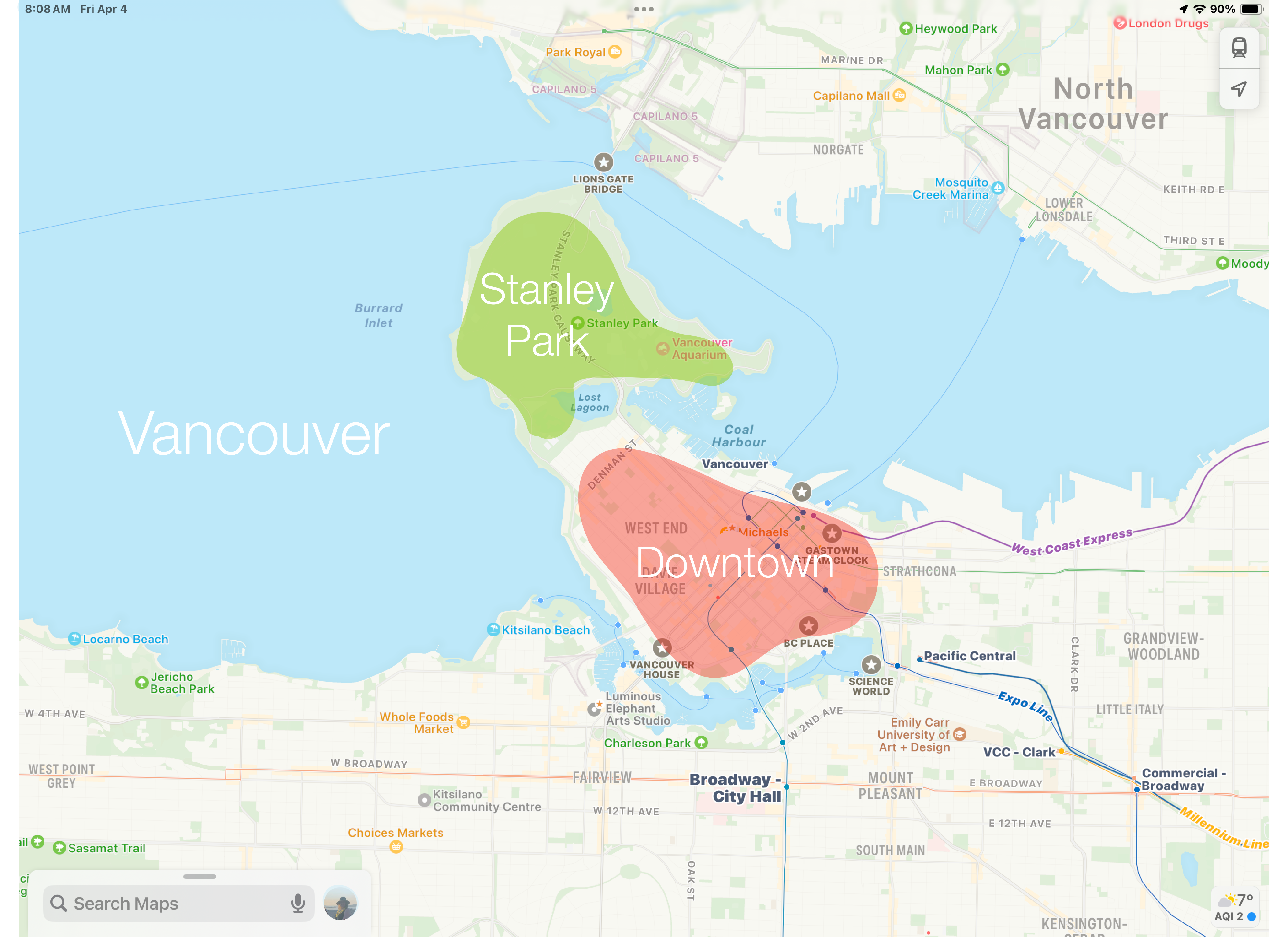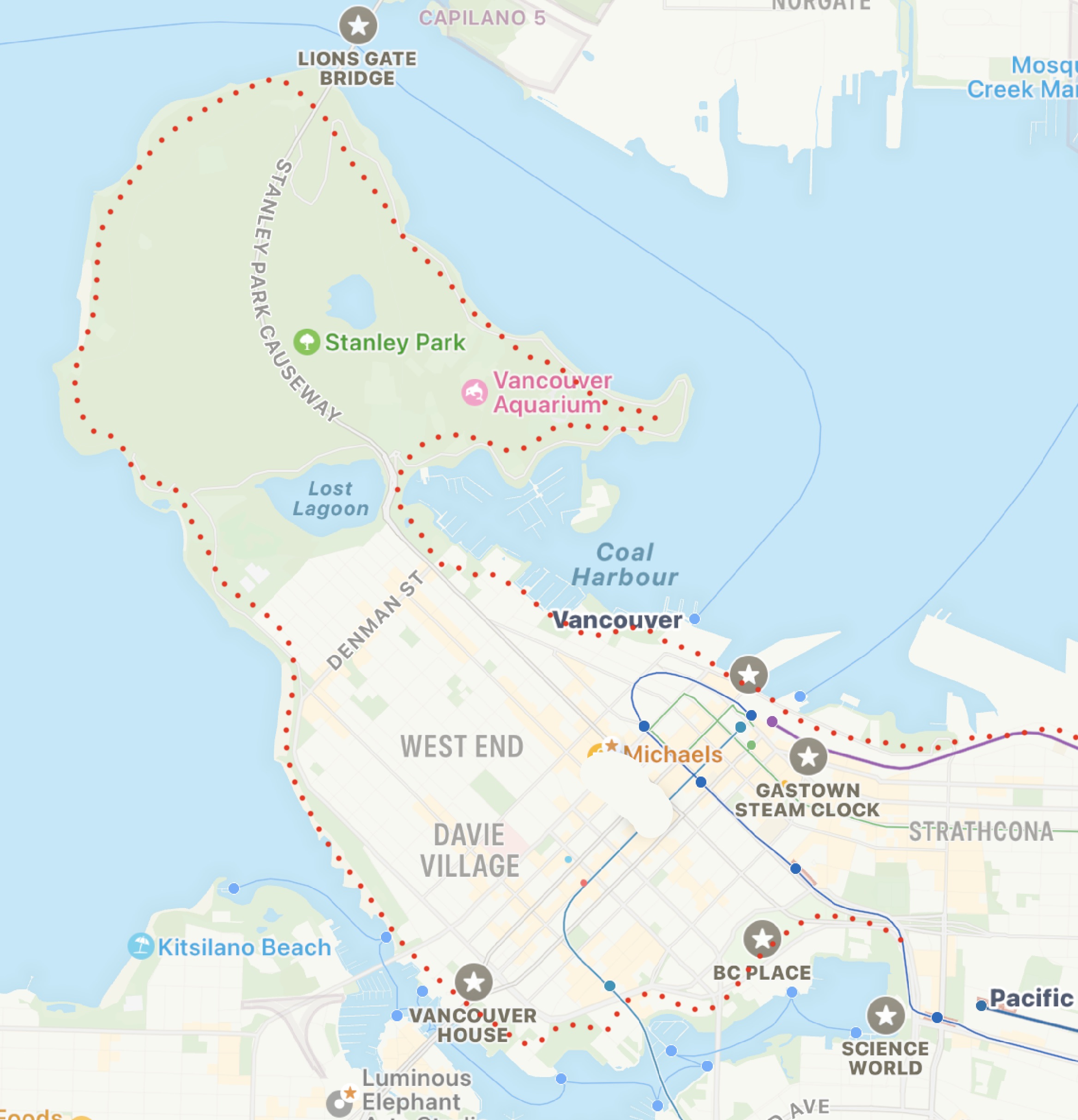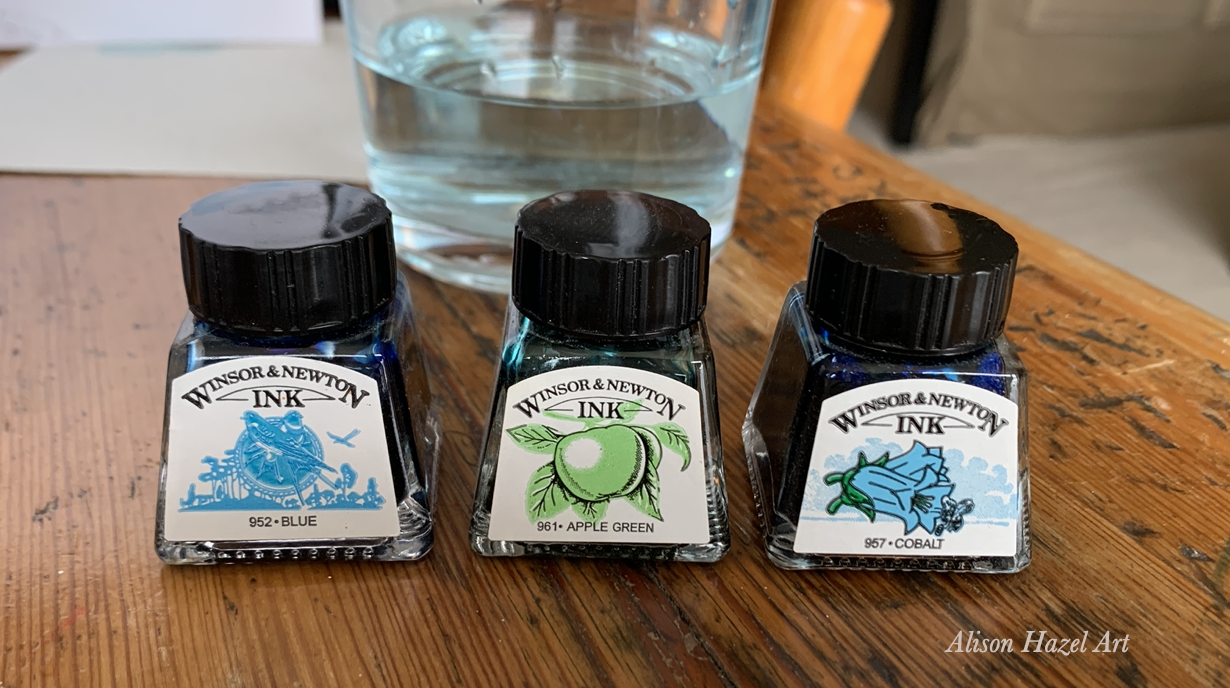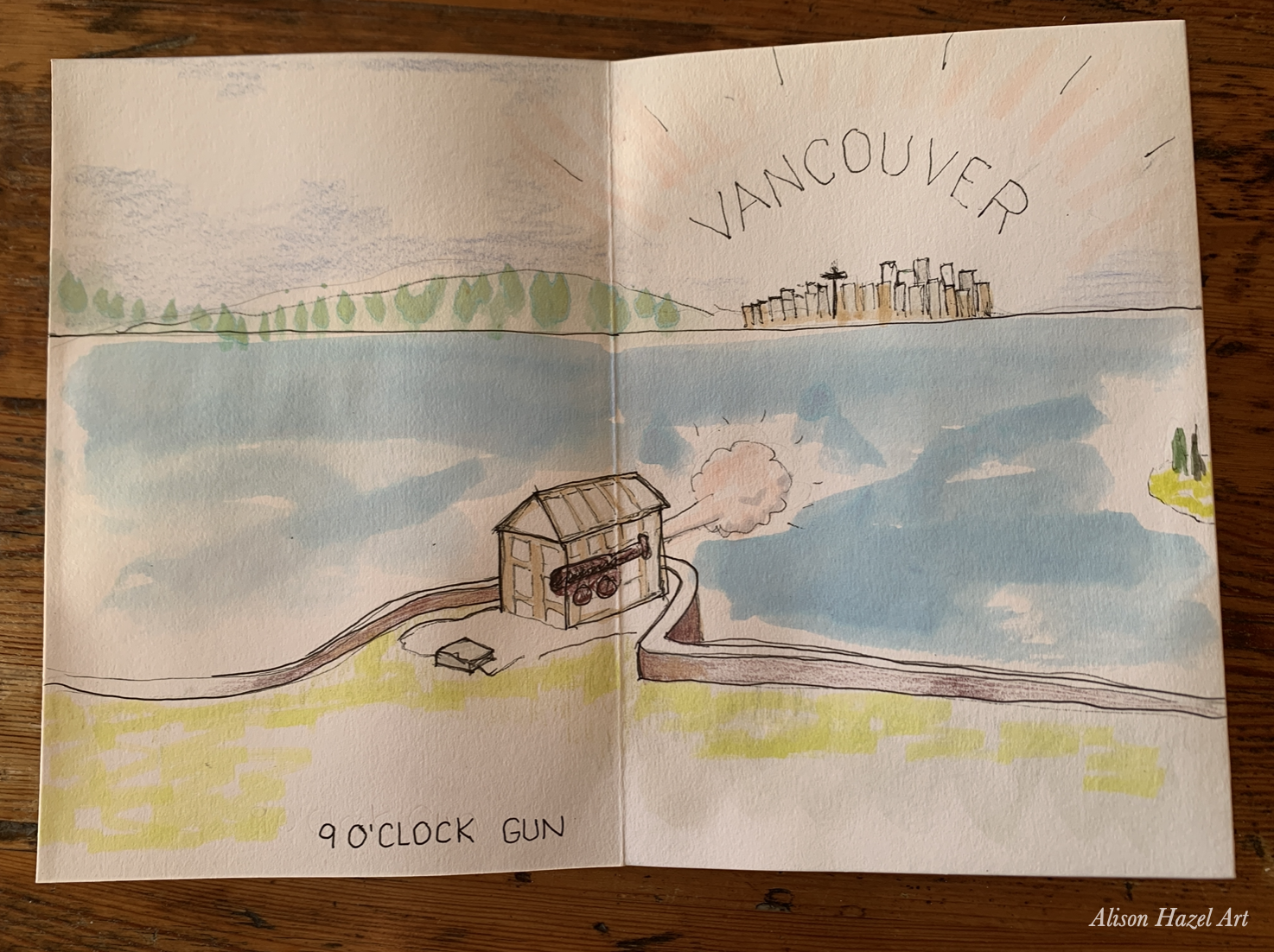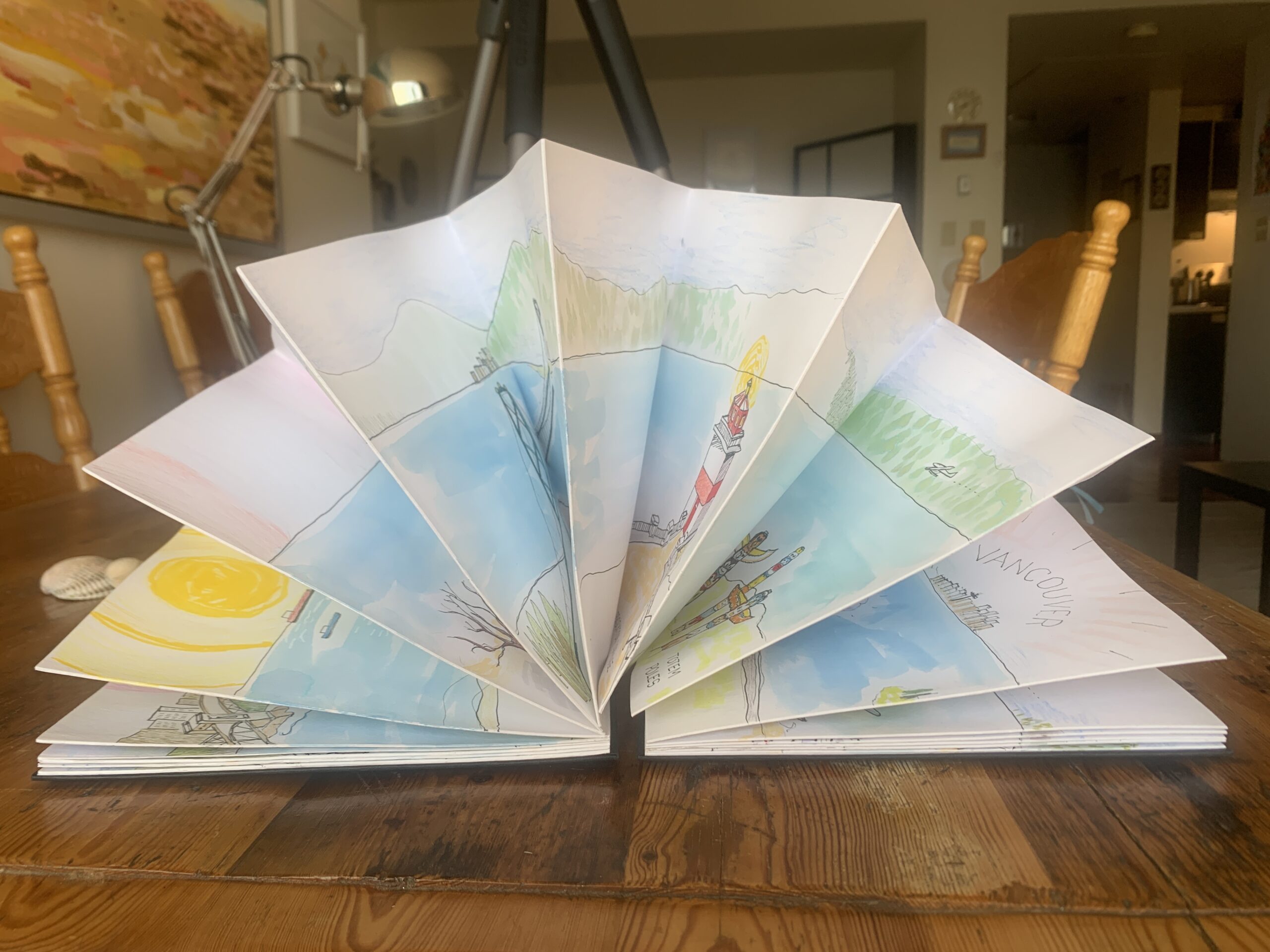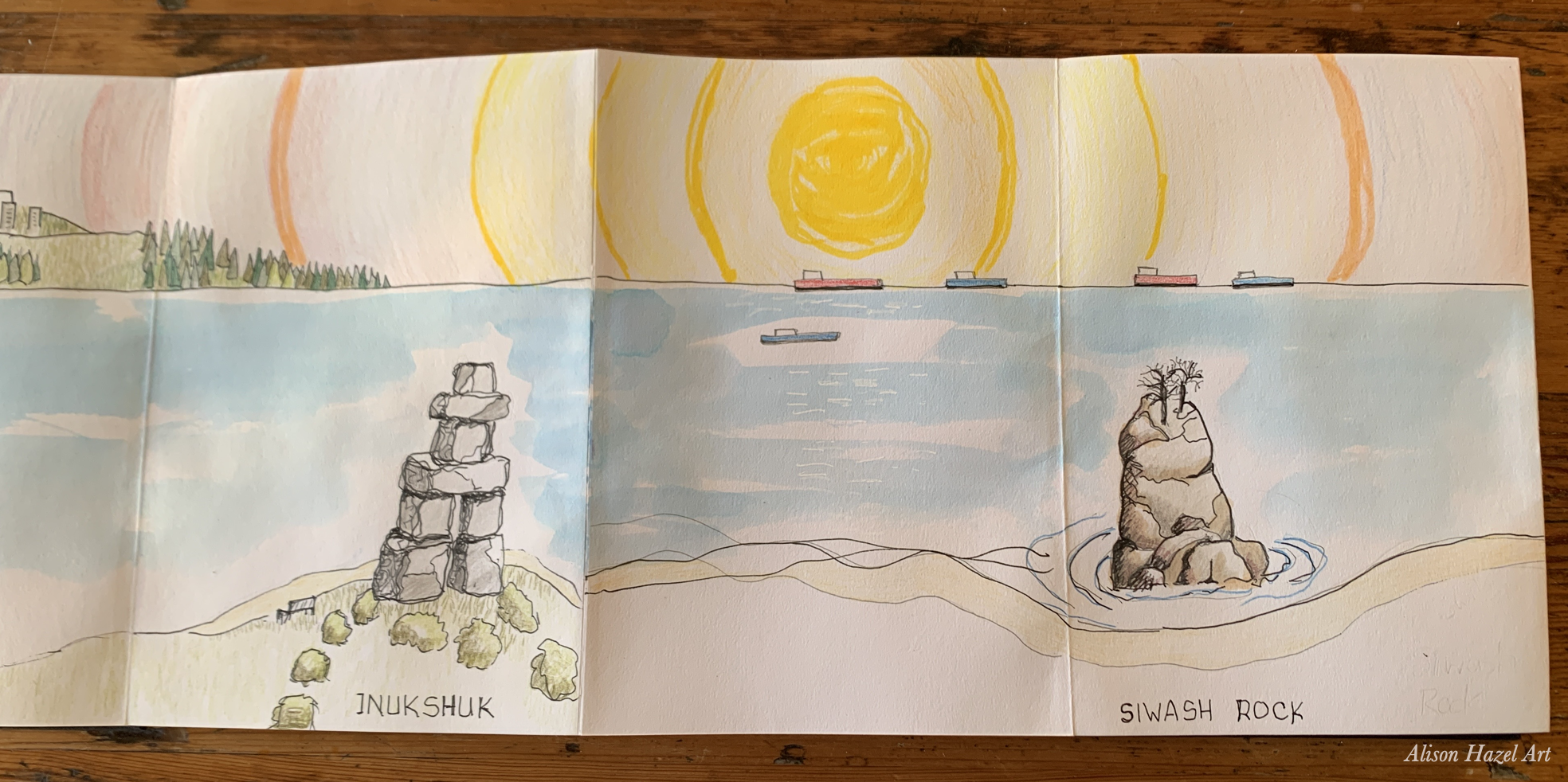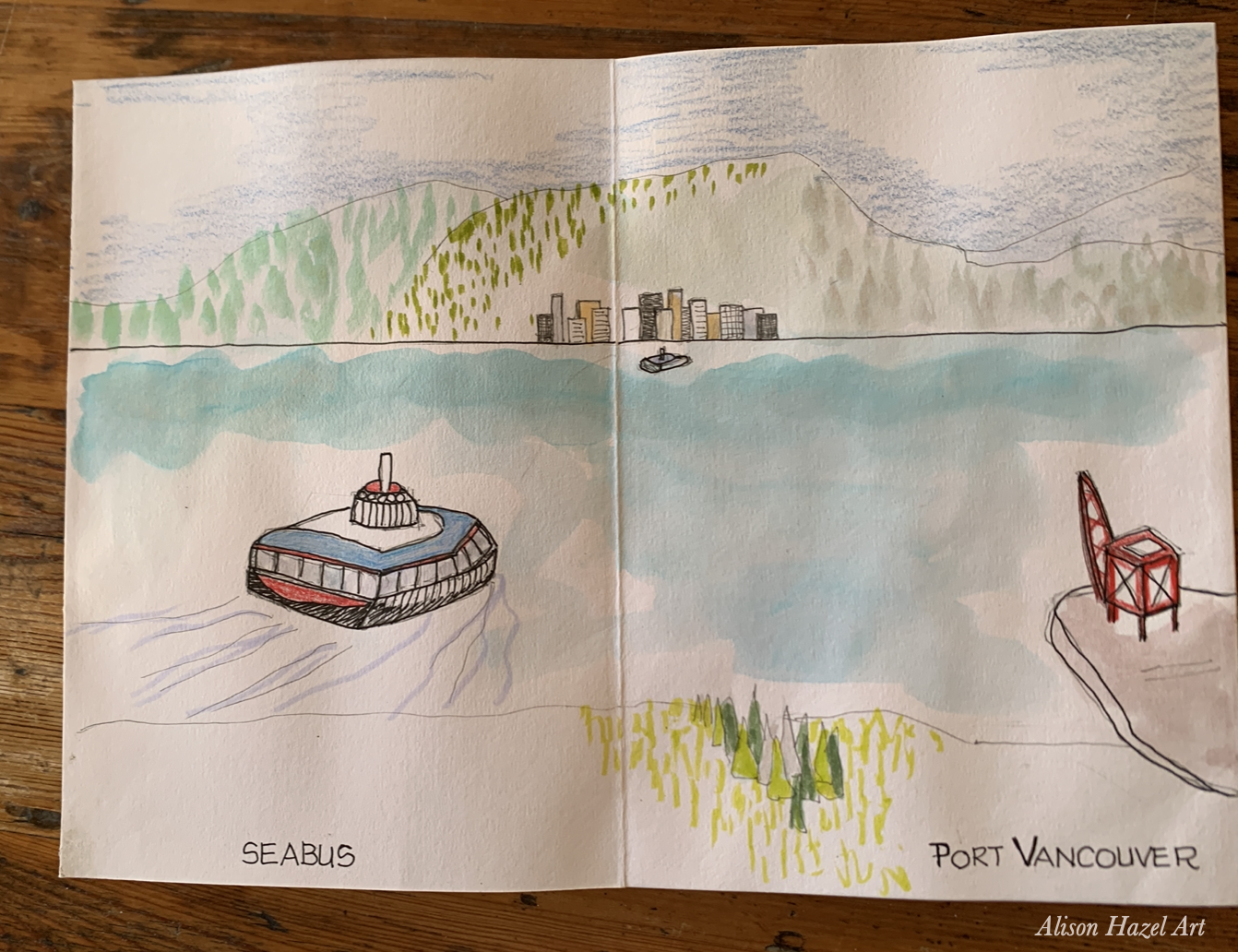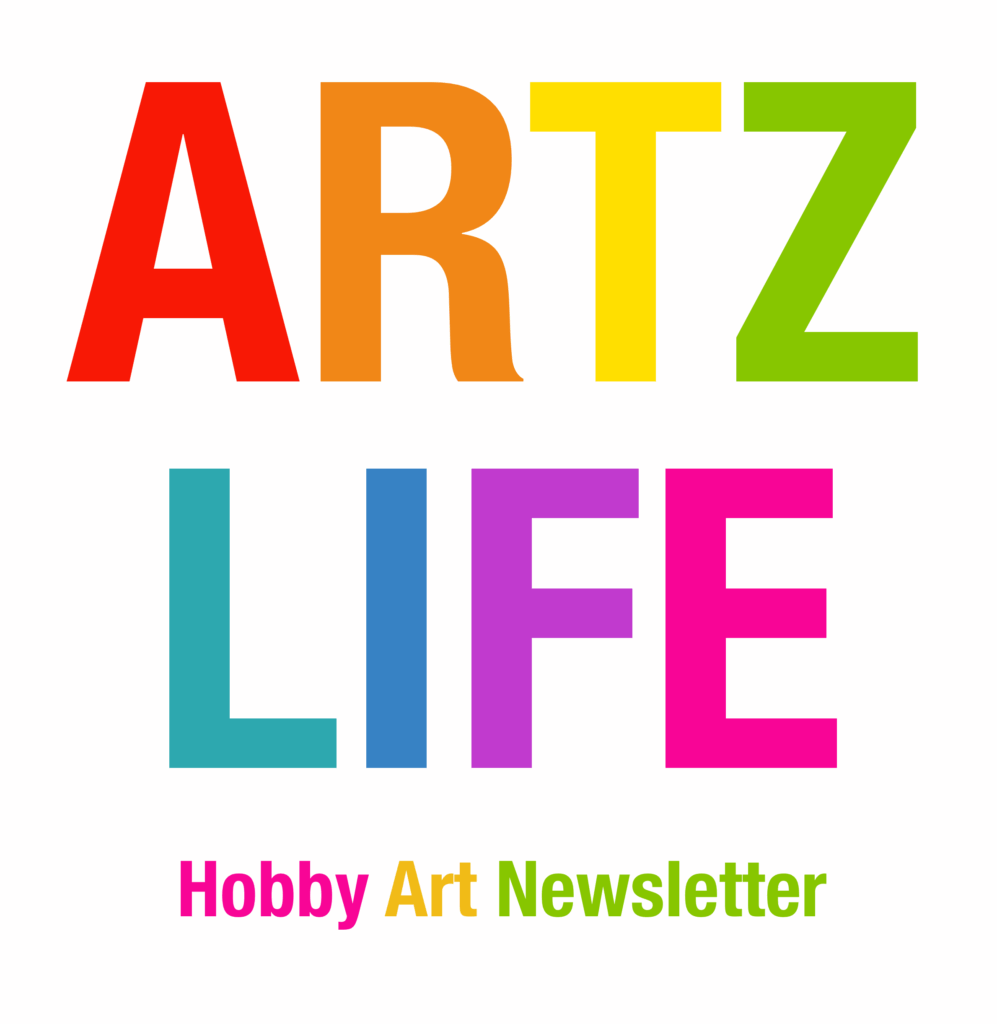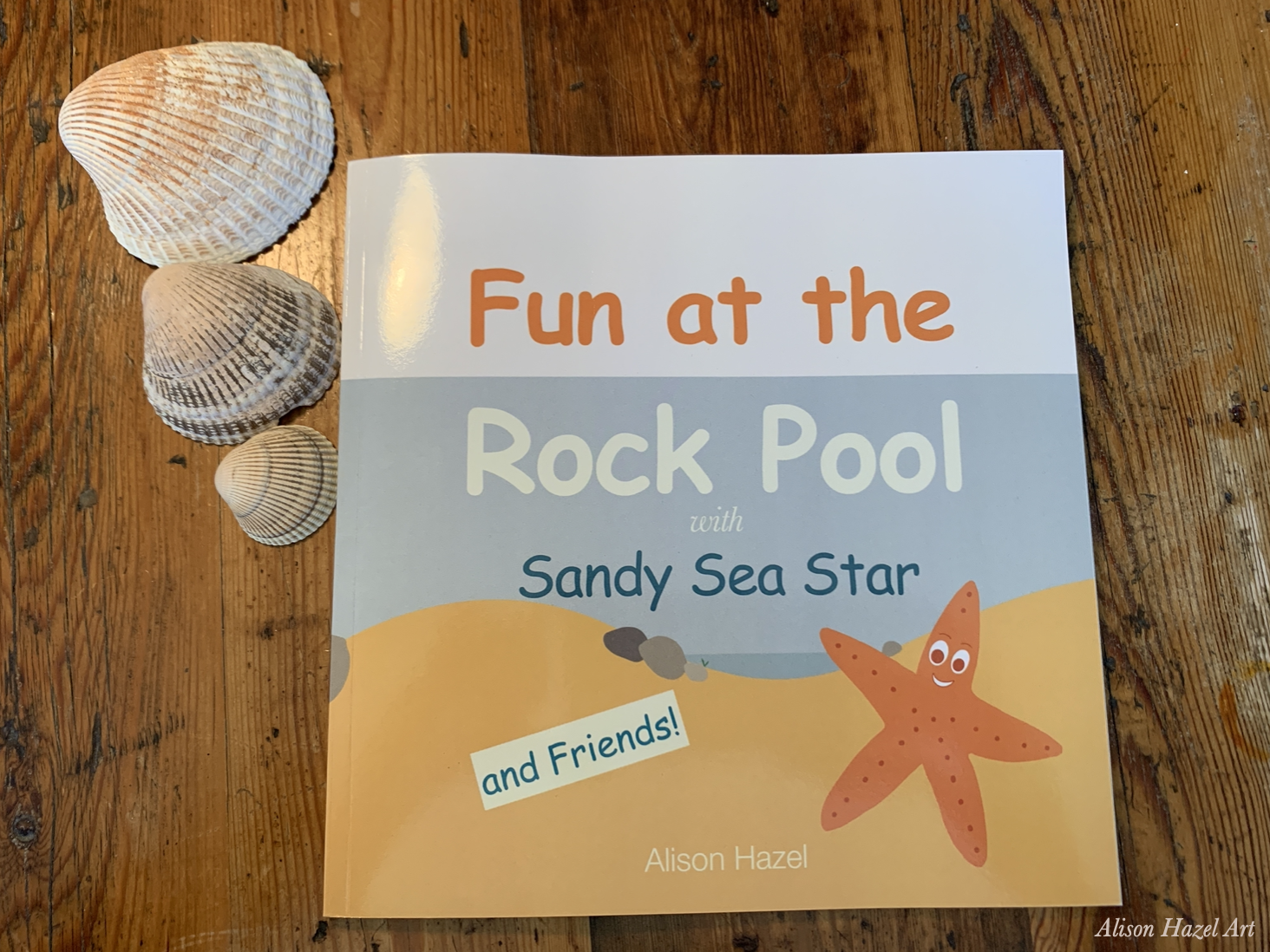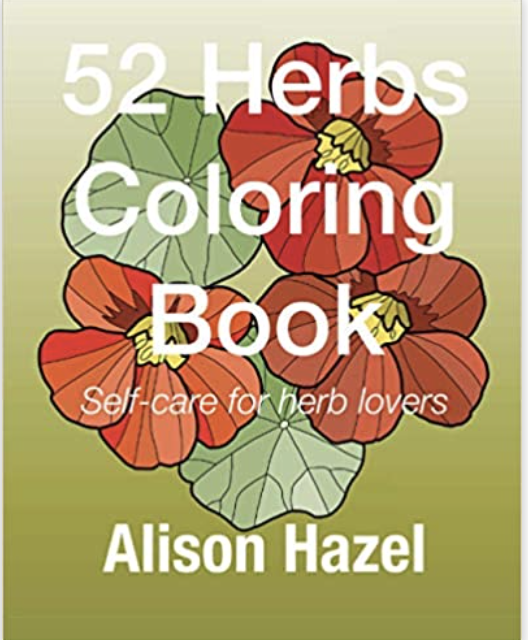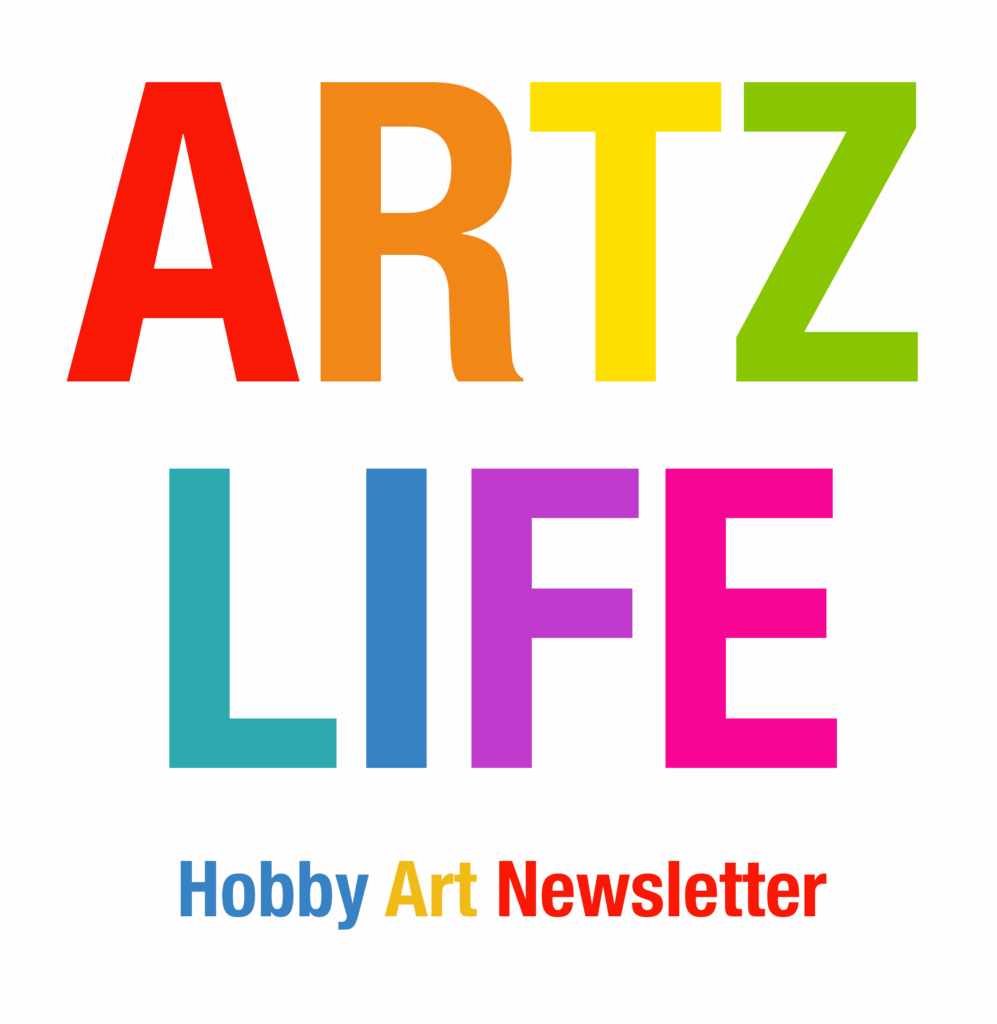How to draw the Vancouver Inukshuk with black and grey scale drawing inks. Nature Journal. Hobby Artist
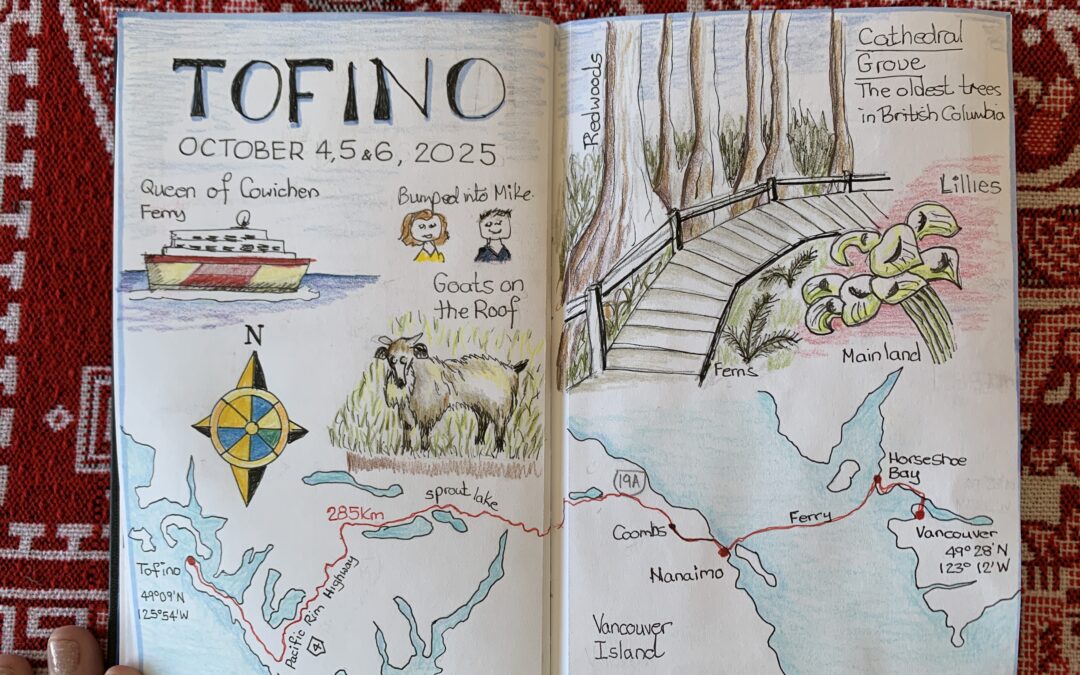
Travel Journal: Tofino
Author: Alison Hazel – Updated: October 2025
Introduction
I’ve often said that I don’t travel very much, yet here I am again on my second weekend getaway this year. Earlier I spent a few days in Whistler and shared that experience with you, and now another adventure has found its way into my sketchbook. This time I’m opening my travel art sketchbook from a weekend getaway which I took in October 2025 to Tofino.
I traveled with some close family members in their cars. The journey began in downtown Vancouver, where we made our way to Horseshoe Bay to catch the ferry to Vancouver Island. We docked at Nanaimo, and from there the road carried us across the island’s width until we reached the little coastal village of Tofino, perched halfway up the coast and looking out over the wild Pacific Ocean.
Drawing the Map Beforehand
Journey Map
Because I knew I was travelling from Vancouver over to Tofino. I was able to prepare the map beforehand. I open Google Maps and set the image to display both Vancouver and Tofino so that I could capture the coastline as a silhouette beforehand. Because it’s basically a horizontal trip, if you will, I decided to put it all horizontally across the bottom of a two-page spread slap bang on the first page of my Tofino weekend sketchbook.
Once I’d lightly sketched out the coastline in pencil, I went over it with my 0.3mm black pen just to get an idea of the shape of Vancouver Island and the mainland as well. I put the path we’re actually going to take in red, because we’re going to be driving in the car, going down to the ferry at Horseshoe Bay, catching the ferry across the sea to arrive in Nanaimo and then back driving in the car all the way on the drive across the island to Tofino.
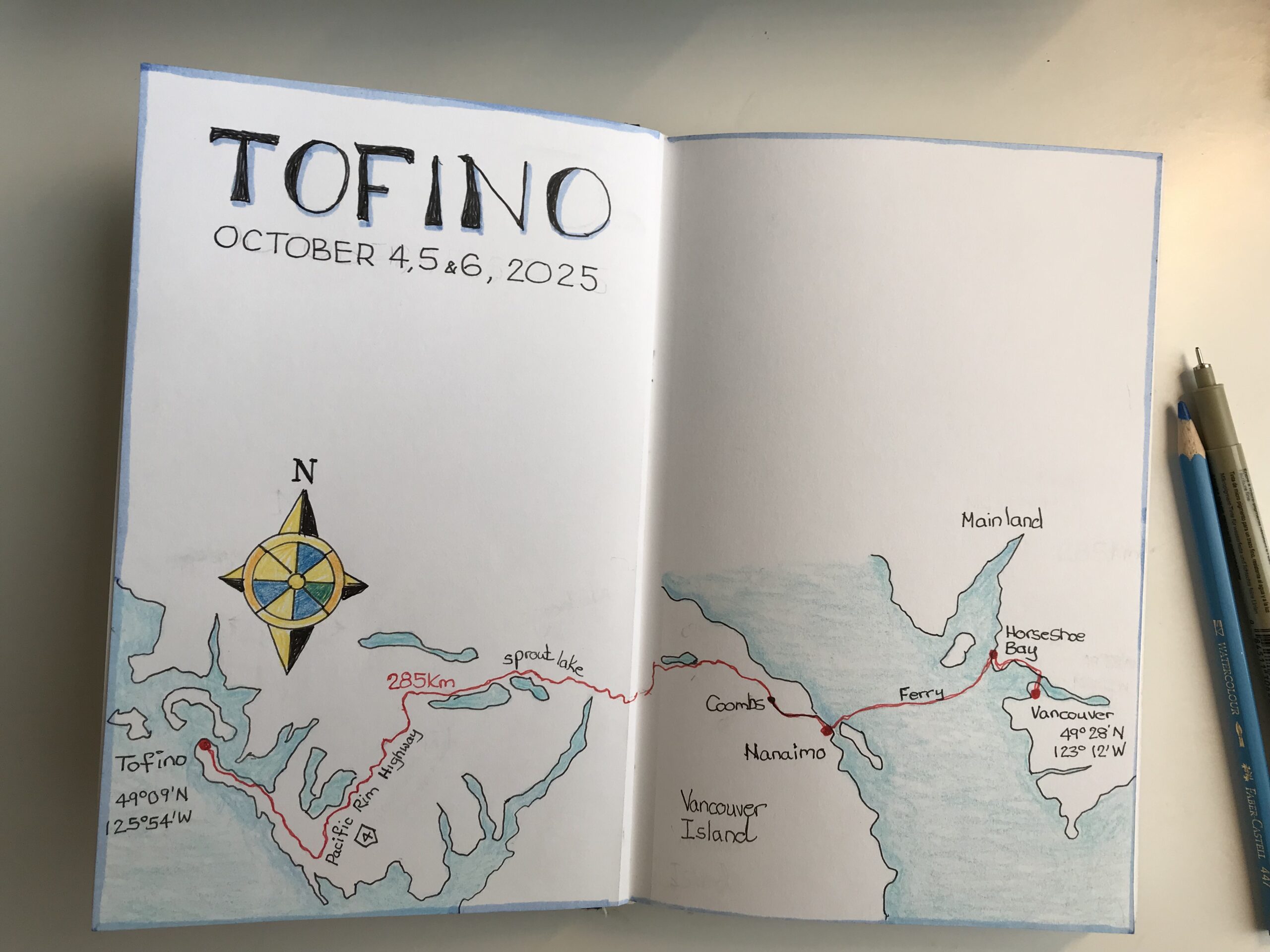
Lakes
I added a couple of the lakes that were quite big on the map. And really, I haven’t traveled this road so I’m not exactly sure, but it seems that the road runs along the side of a couple of lakes, so the big lakes like Sprott Lake I put in.
Guide
Now this map is only a guide because I haven’t left home yet, but if we stop at some of the villages along the way I can mark them on the map. I note what we did, or the snacks we had, or if we had coffee, at these places and I can do this because I’ve already got the map laid out. You really can only put the map in if you are exactly sure which route you’re going to be taking before you leave home. I always love to put a map in my travel journal because you can put so much information into this type of chart. And it makes a great addition to your travel journal pages.
Distance
As I spent a couple of hours working on this map, I realized that the distance from Vancouver to Tofino is actually going to be 285 kilometres (177 miles). Additionally, I noticed the longitude in Vancouver is 123°12′ West. Whereas Tofino is 125°54′ West and this was interesting because when I visit Tofino, it will be the most westerly I have ever been on Earth in my life, so I thought that was interesting as well.
Compass Rose
Many maps have a compass rose which is the circular pointer that points north. If you look at old maps, they have very ornate and stylized compass roses and I like to do this myself. You could just simply put in an arrow with an “N” below it pointing to north, but I thought this time I do something a little fancier because I can. I created a more lavish compass rose on this particular map to Tofino.
Setting Off
Packing My Sketchbook
When I tucked my sketchbook into my bag that morning, I promised myself I’d try to capture more than just what I saw. I wanted to record the mood of the day, the rhythm of the streets, and those fleeting little details that slip away too quickly.
Packing Art Supplies
With a few pencils, a couple of pens, some colored pencils, an eraser, some beach themed washi tape and a small pair of scissors, I set off feeling both curious and ready to let the pages unfold like a quiet companion to my journey.
Arriving
Tofino First Glimpses
Once we were settled into our log cabin we went exploring and down to the nearest beach. This was at about noon and the Sun was beaming down highlighting the trees and the ocean.
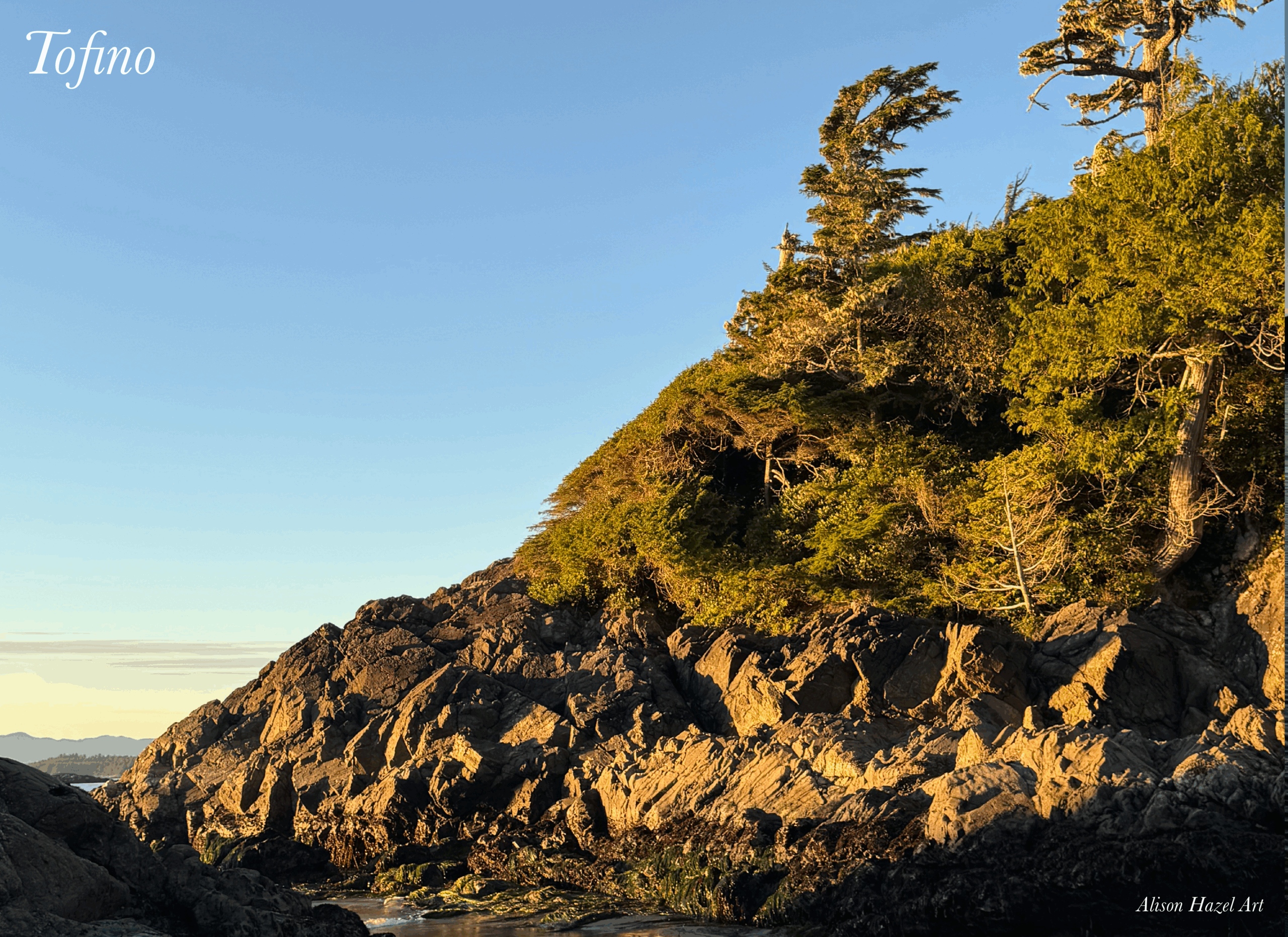
Beaches
Seascapes
The beaches were a definite draw for me.
Not only did they draw me in, but I attempted to draw them as well.
Bear in mind that I was travelling with several family members and the days were pretty filled up with brunches, lunches and dinners all together, although I did manage to get some pics of the beaches.
Chesterman Beach
This image shows a little fog starting to roll in from the Pacific Ocean at Chesterman Beach.

Sea Stars
I was fortunate to happen upon this couple of bright orange sea stars clinging to the lower rocks just after the tide had gone out.
Sea stars always interests me and you may know I wrote and illustrated a whole children’s book titled “Fun at the Rock Pool with Sandy Sea Star and Friends” for ages 3-7 years which is available on Amazon.
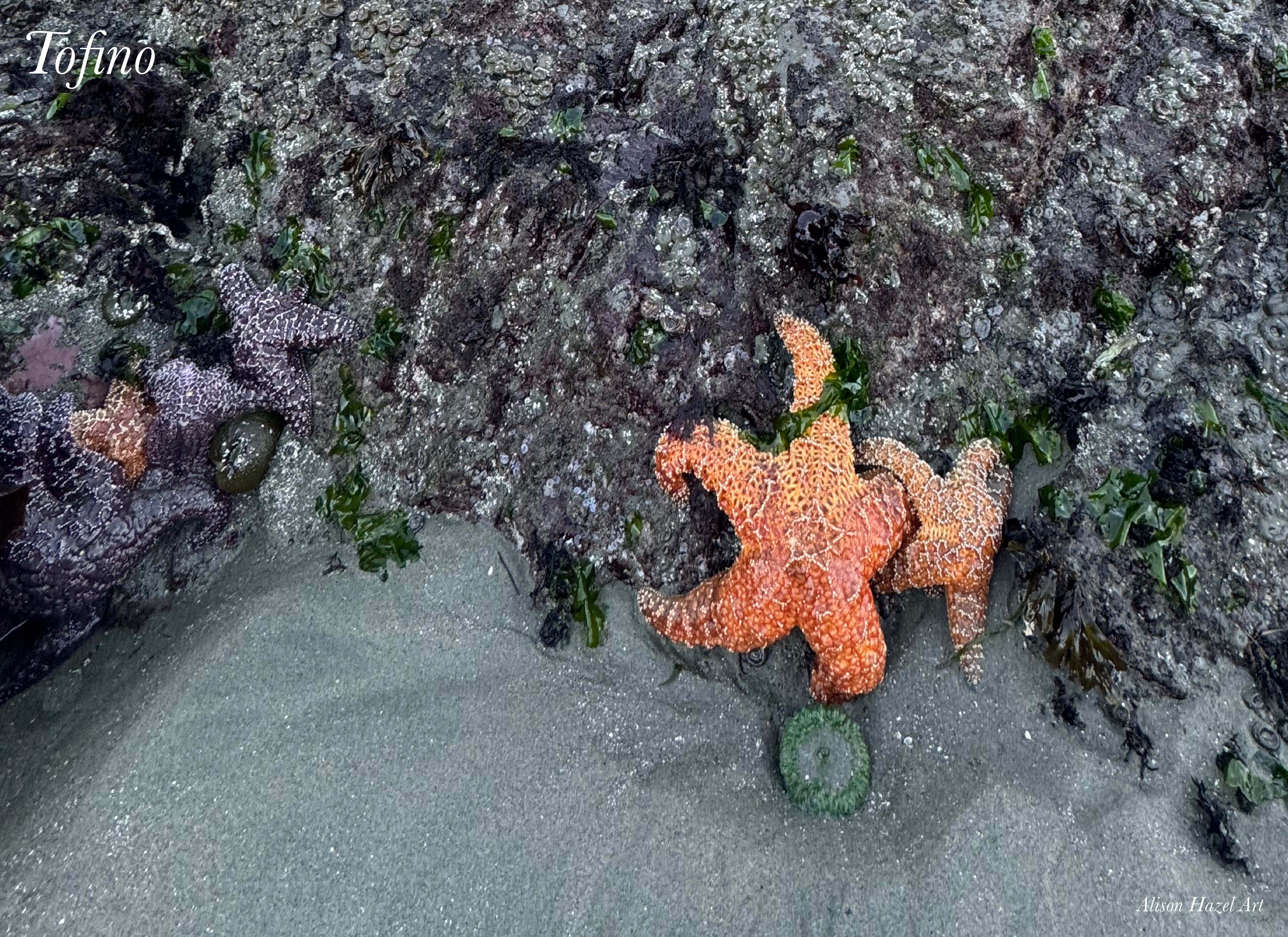
Long Beach Sunset
Because Tofino faces west you get to see the sunset every evening. Here is a shot of the sun setting at Long Beach.
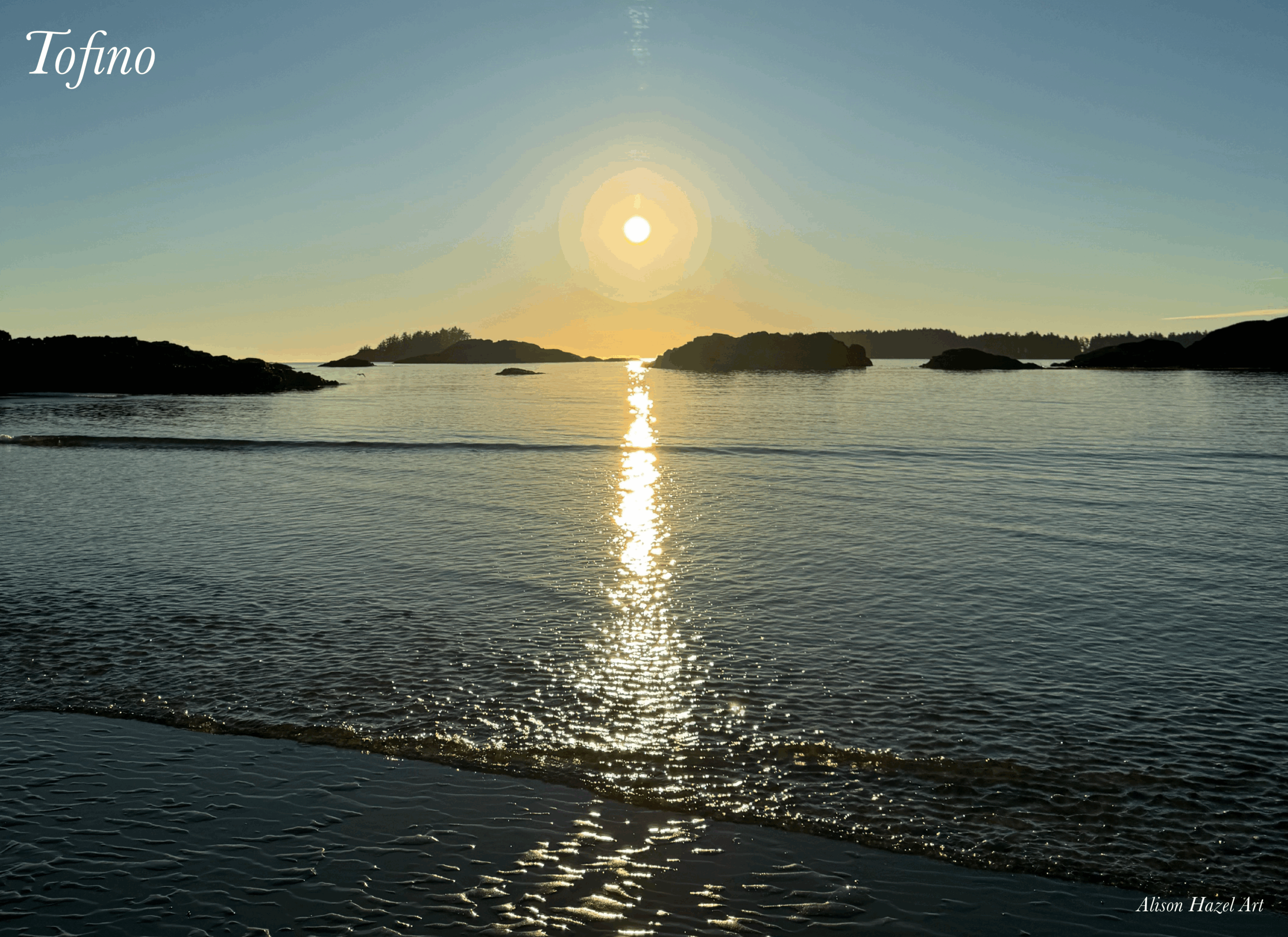
Sketch not Travel…
Let’s face it, this isn’t a travel article per se, but I’m meant to be focusing on the travel sketchbook pages which I created while I was there and completed once I got home, so enough with the nature shots.
When I Sketched
Timing
For me, this was not just me going away on a sketching weekend, or a writing weekend, as I did with my friend when we went up to Whistler recently. It was a family escape weekend where there was actually a beautiful wedding-on-the-beach involved. The days were bursting with activities and although I took lots of family photos, they are not suitable for here. So, it was really only when I got into bed at night that I was able to whip out my sketchbook and sketch what happened that day.
Evenings
I started with the first day which was the actual journey to get to Tofino from Vancouver, with my 2H pencil I lightly sketched out the double spread that was to be for Day 1.
First Spread: Left Side
Ferry
I noted the ferryboat’s name, Queen of Cowichan, and that I unexpectedly bumped into a friend from work, Mike, who was travelling to Vancouver Island that day too.
Goats
At the village of Coombs, we stopped to explore the “Goats on the Roof” Old Country Market and general store which was a fun place to stop and pick up a souvenir. Their slogan is, “If you don’t need it, we have it!” Who knew I needed a goat ornament for my tree this year? 🐐
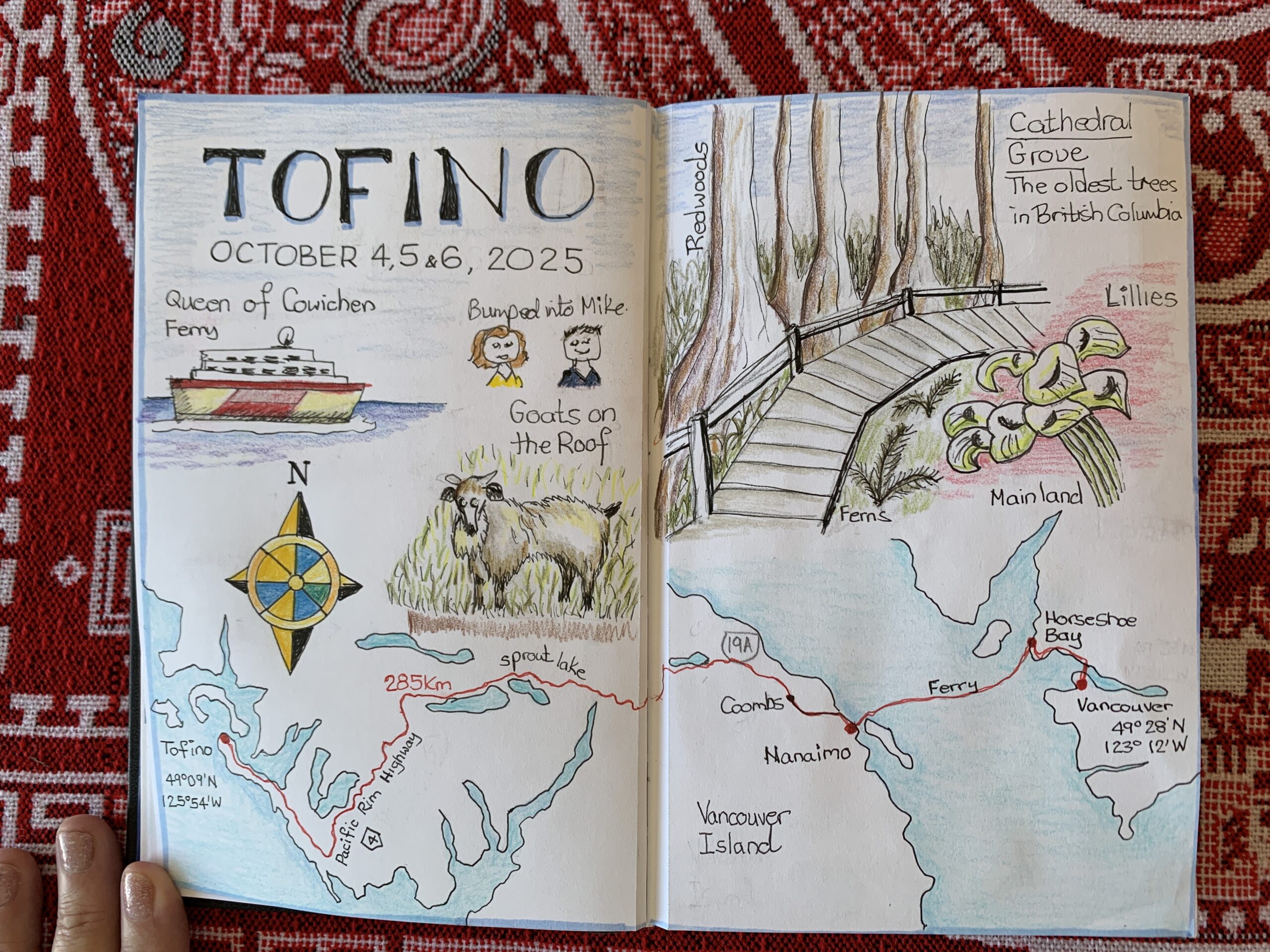
First Spread: Right Side
Cathedral Grove
The journey in the car continued and we stopped for a break at Cathedral Grove. This is a protected park which boasts the oldest trees in British Columbia. Some of the redwood specimens are over 300 years old. Their diameter was around 4m (13 feet) for the big ones and possible more. You walk over a raised boardwalk to preserve the nature and not stomp on the undergrowth.
Lillies
Once we arrived at the cabin the bride-to-be placed some lilies in a vase on the rustic table which I captured in my sketchbook. Technically as an artist, this subject is a bit trickly as the blooms are white, so you tend to need a light green or pistachio color to bring forth the beauty in these flowers.
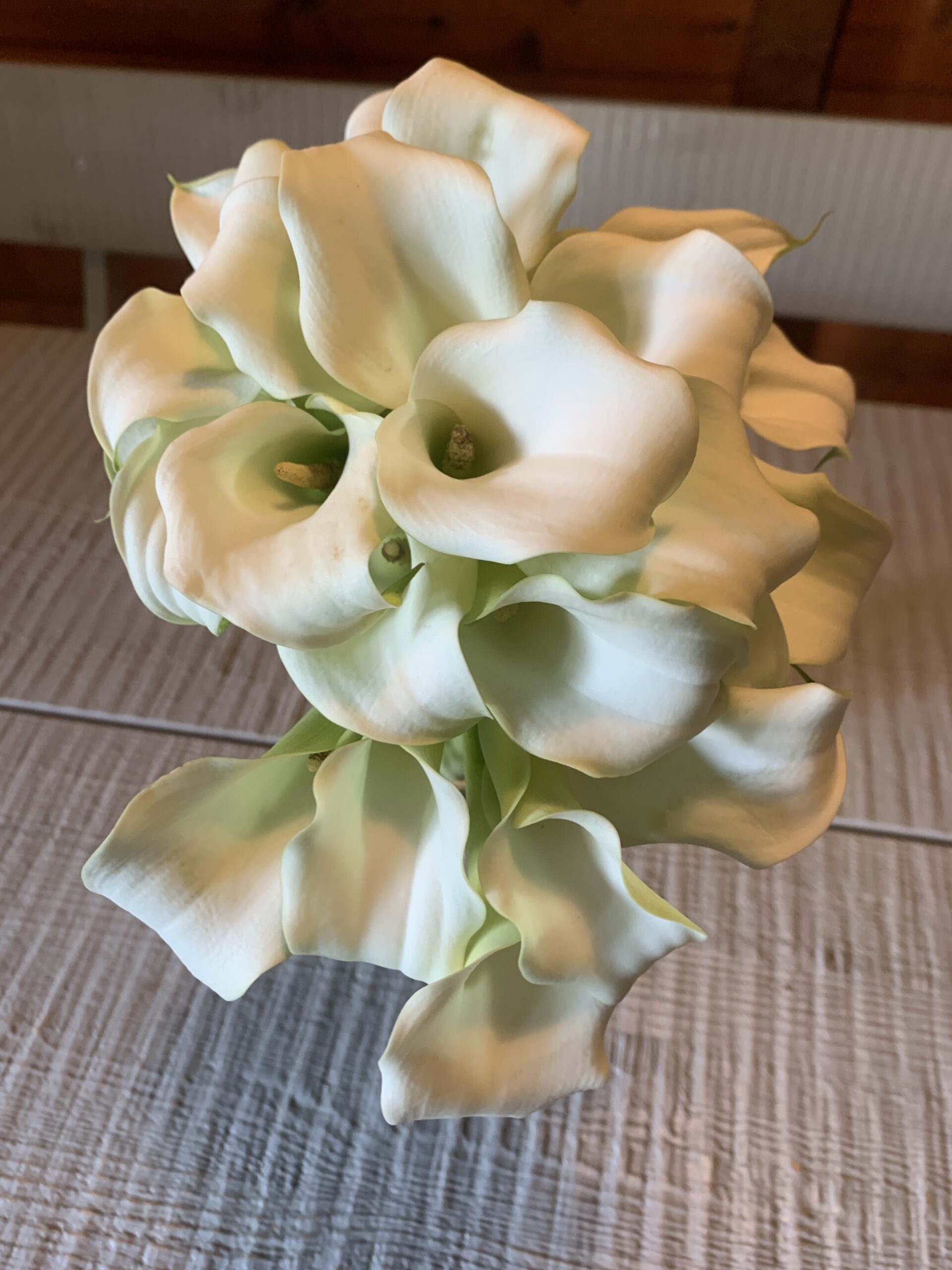
2nd Spread: Left Side
The Shed
First evening and dinner at the patio of “The Shed” burger bar.
Shed Burger
I sketched the Shed Burger which I had with fries.
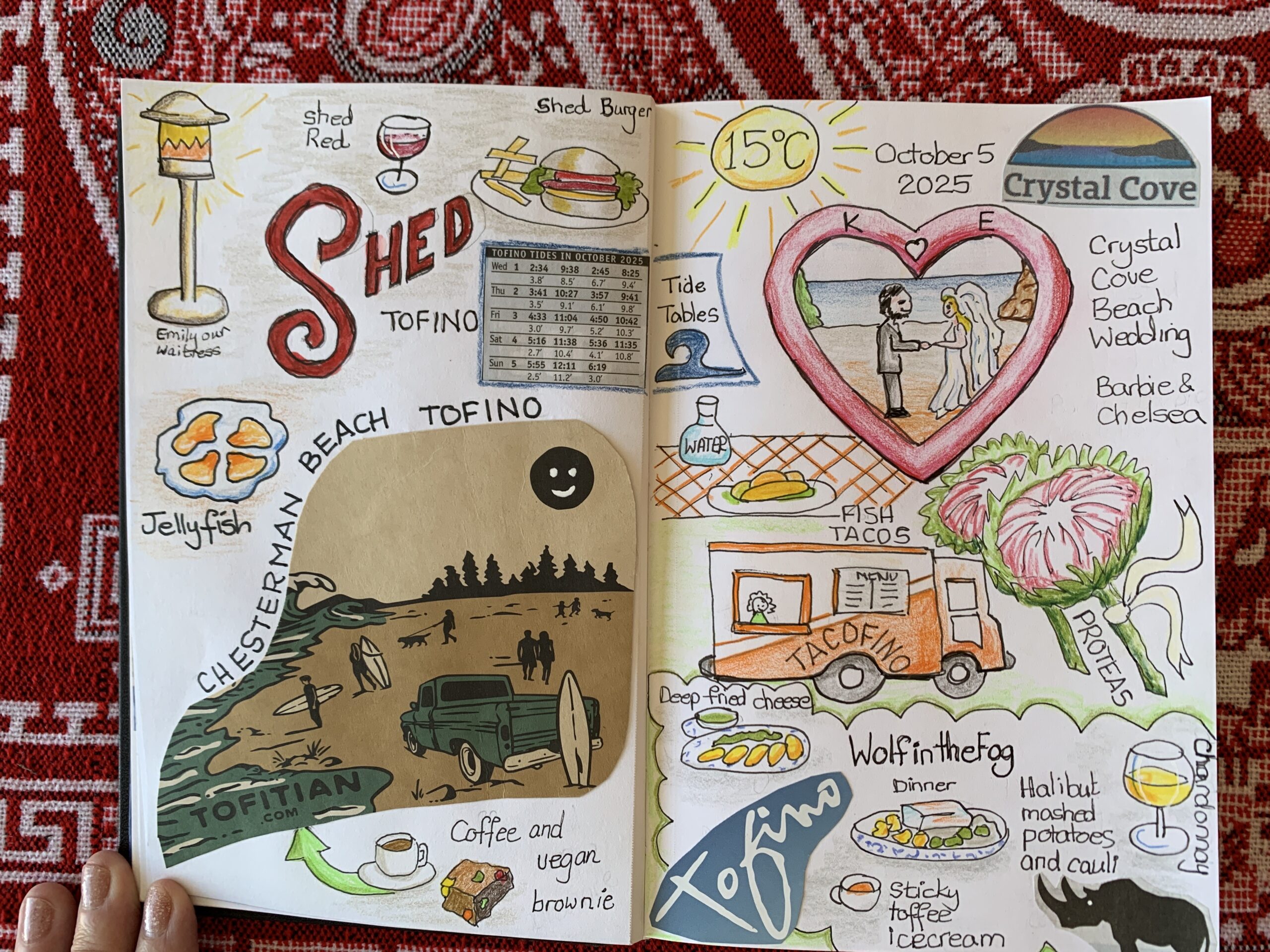
Shed Red Wine
The “Shed Red” is a red wine that comes in a can and it was quite good. I’ll be looking out for canned wines when I get back to the big city. Next to our table was a massive outdoor heater that became scorching during the evening fortunately our lovely waitress, Emily, turned the blast down for us.
Chesterman Beach
There are countless surfers at Chesterman beach as shown on the coffee cup side which I glued into my sketchbook. I always travel with a glue stick to add receipts or papers, or now coffee cup sides, into my travel sketchbook.

Jellyfish
Strolling for a long time on the beach we came across a large translucent jellyfish. It had four milky main chambers which and been beached. The creature was clearly waiting for the next tide to whisk it away. The jellyfish was about 40cm across (15″) and glistening with moisture in the sunlight. I believe they can still sting, so we just took photos.
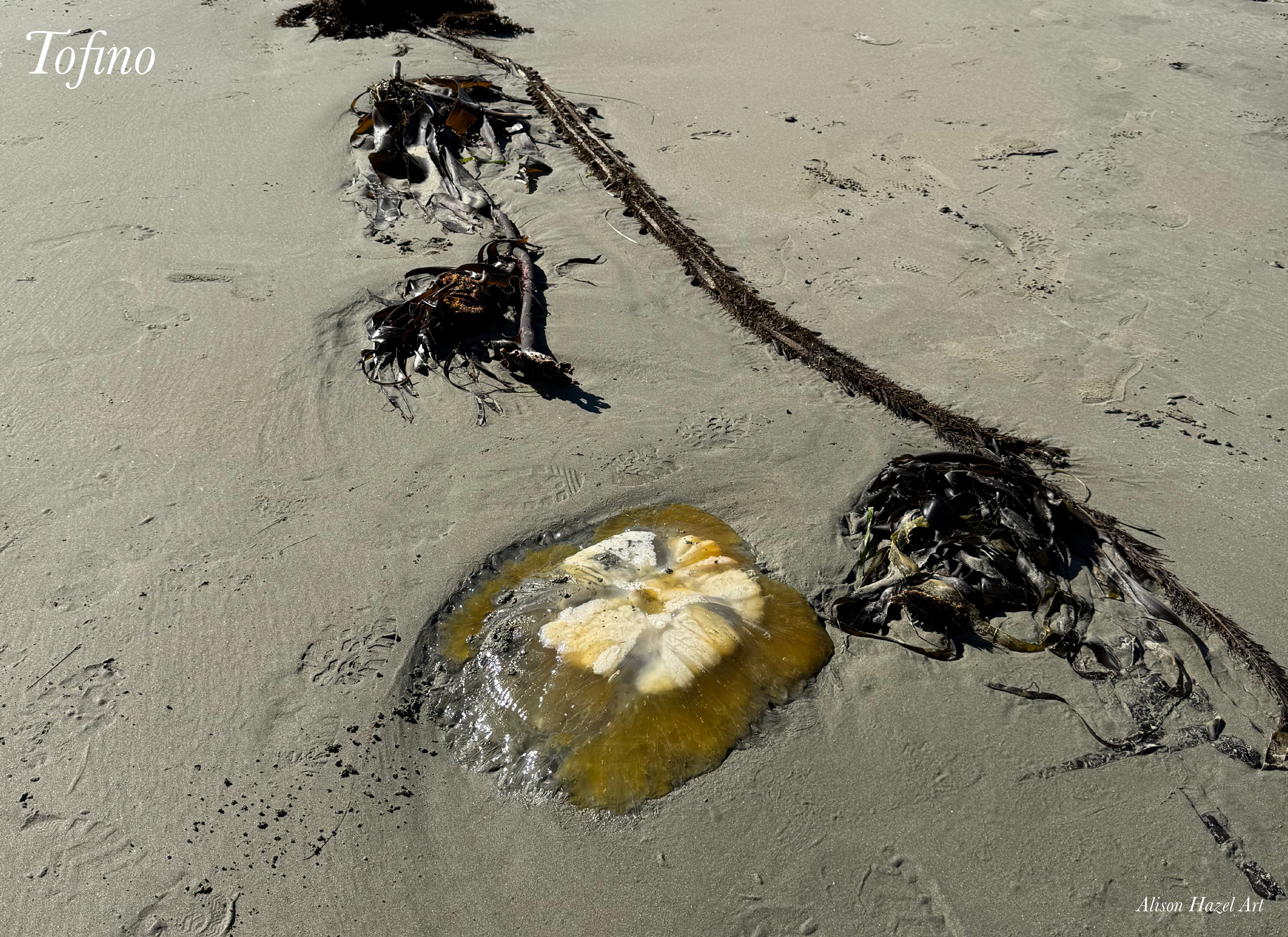
Tofitian Café
On the next day, and after the wedding, the other women and I drove and to have a snack at the Tofitian café. I sketched a simple latte in a cup and saucer and the vegan brownie which I chose for my snack. This brownie had large chunks of beets, carrots and fruits which made it quite substantial and chewy indeed.
2nd Spread: Right Side
Temperature
It’s always a good idea to note the temperature when you develop the pages in a travel journal. For the weekend the temperature was a high of 15°C (59°F) which I drew in a circle like the sun. For an autumn day it was not too hot nor was it freezing either.
Happy Couple
To commemorate why I went to Tofino I the first place, and it was not just for a travel journal piece, I did a small heart shaped sketch of the happy couple. I’m not naming them either. I don’t want to give away anymore than that, as it is their place to share their wedding experience with the world, and not mine.
Crystal Cove
The wedding was presided over by Barbie the local marriage commissioner. We got to meet a fabulous photographer, Chelsea Gray who was great and gave positive direction for the multiple groups shots, poses and lineups against varied backgrounds, in the waves, at the beach and surrounds. She captured the important details like the rings, the family dog and the special moment when the couple tied the knot. It was a pleasure to have met her.
Bouquet
The pink, green and white bouquet combined king proteas and olive sprigs to commemorate the combining of the two families. I sketched this with quite a close up to add interest.
Tacofino
One lunch was at the famous Tacofino hut where you can line up for half an hour before you get to place your order. I sketched my fish tacos and water bottle which we consumed outdoors at wrought iron tables painted in their signature orange.
Wolf in the Fog
The main family celebration dinner was held at Wolf in the Fog restaurant in the heart of Tofino village. It seems the top predators in the area are wolves, not bears, so that was something of interest in itself.
The fog refers to the grey thick fogs which roll in from the cold Pacific Ocean and creep into the village at certain times of the year. I mean, imagine seeing a wolf in the fog as you go about your day. Something to think about right there.

The restaurant’s mantra is fish, forage and feast and it was fantastic. I’ve tried to capture the meal in my sketchbook. We wolfed down (see what I did there), deep-fried cheese balls with toasty bread, firm and meaty catch-of-the-day halibut, creamy mashed potatoes and garden-fresh greens, followed by sticky toffee pudding ice-cream. I sipped on a rich golden chardonnay which was smooth and exquisite. Simple food but fabulously prepared and presented. I recommend this restaurant.
10 Tips for Your Travel Sketchbook Spread
Page Title
Start with a light pencil sketch. Draw the title of the pages. In my case the page heading was “Tofino” which I created in an interesting font.
Composition
Look at the composition of your page and try to have an odd number of mini sketches on each page. Five or seven is a great start so the images can be staggered across the page and not just plonked in a grid.
Collage
Glue in small cutouts, receipts and images whch relate to the page. For example, I added the sea tides table for the days we were in Tofino. This detail made sense because we explored the beaches.
Natural
If possible, add something natural. Perhaps a leaf, petal, seeds or flower head to the page for interest. Alternatively, glue in some ribbon or colored string which relates to the visit.
Map
Always draw a map to set the stage because maps provide context to your journey. Simple diagrams can show where you came from and where you are going. Charts could be of the area, or the inside the place in which you stayed or even of your room.
Weather
In travel journals it’s always fun to add the daily high temperature for the time you were there. Noticing the weather forever adds interest to your spreads. If it was snowing or sunny you’d want to include those details as well.
Dates
Make sure to add the dates which you arrived and the days when you travelled somewhere on the page. As a legacy, your travel sketchbook will give so much information surrounding what you were doing at that particular time in your life. Others who come after you will have the opportunity to understand more about you and your life during these years.
Meals
Food and drinks are always a suitable topic for your travel journal. When you look at the pages later, the plates and glasses will remind you what you ate and perhaps more importantly, with whom you shared the feast.
Vehicles
Mention how you got there, was it by car, plane, ferry or train? One day I hope to travel in a hot air balloon and then I’ll indicate how I got there. If possible, add the road number, flight number and carrier, or the train company details as a reminder.
People
Mention anyone you meet on your trip. Like as in the case of me bumping into Mike, who is a person I see at work. State anyone who stood out as someone with whom you shared a meaningful interaction. This individual could be a server, a concierge or someone living locally.
Mood
Consider the mood of the journey. Was it exhilarating, fun or soothing for your soul? How did you feel when you left? Will you go back?
Try to capture your feelings about the trip. The best time to do this is the last evening which you are there. This is when you’ve experienced most of the good stuff and you only have a long travel-day to face on the morrow.
Souvenirs
If you bought things knick-knacks and so on, then add them to your spreads. Tokens or little crystals are always good items for a journal.
Mementoes are physical reminders of how the holiday or weekend went to remind you after you get home.
I believe that objects carry the energy of their places. If I buy books when I’m away from home I’ll draw the cover of the book as a reminder of when and where I got it.
Similarly with artworks. If I pick up an art print I’ll sketch a small image of it in my travel sketchbook as a reminder. I’ll also mention the artist’s name and perhaps even the shop or gallery where it came from.
Grateful
Be grateful for the experience. Acknowledge who or what enabled you to experience your weekend away. If someone else paid then note them. If someone drove you in their car mention them. If you scrimped and saved for 12 months to be able to pay for the trip, then say so. Gratitude for the experience is good for your soul.
Overarch
What I’ll Carry Forward
Closing my Tofino Sketchbook feels a little bittersweet. Each sketch brings back a moment like the shifting tide, soft mist on the trees and that quiet feeling of being small beside the ocean. I didn’t set out to make perfect drawings, just to notice more and enjoy the process.
Looking back, I can see how these pages became a record of calm days, gentle color and slowing down. It’s a reminder that art doesn’t always have to be grand but rather sometimes it’s enough to simply sit, watch and sketch what’s in front of you.
Future
I loved my visit to Tofino and since I’ve been home I’ve been looking at real estate in the village and considering if I should get myself a place there.
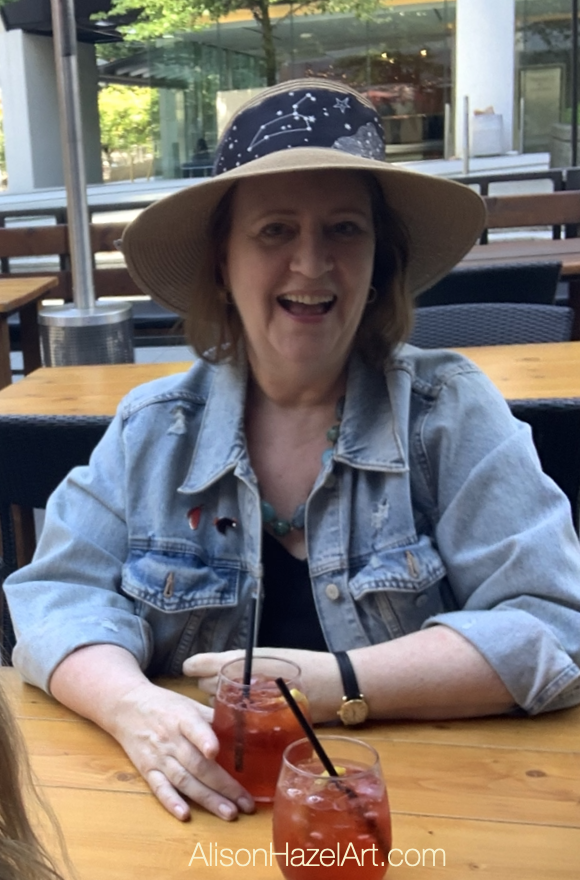
Author Bio: Alison Hazel
Alison Hazel is a hobby artist and she shares her ongoing journey about becoming an artist later in life. She creates simple art that anyone can make. She hopes to inspire you to reach your creative potential in the area that suits you.

Travel Journal: Tofino
Author: Alison Hazel - Updated: October 2025 Introduction I’ve often said that I don’t travel very much, yet here I am again on my second weekend getaway this year. Earlier I spent a few days in Whistler and shared that experience with you, and now another...
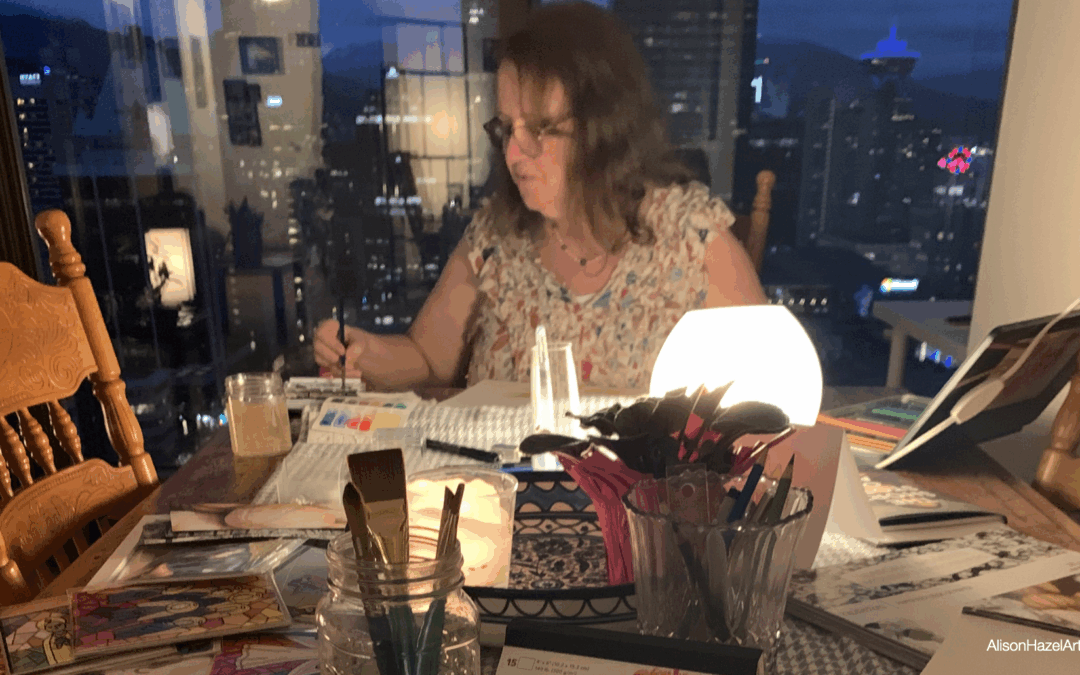
Artzlife Newsletter
Author: Alison Hazel - Published: December 2024 Artzlife Newsletter Creative art journal inspiration for hobby artists Welcome to a Place for Passionate Hobby Artists Are you a hobby artist seeking inspiration, connection and gentle guidance on your creative...

